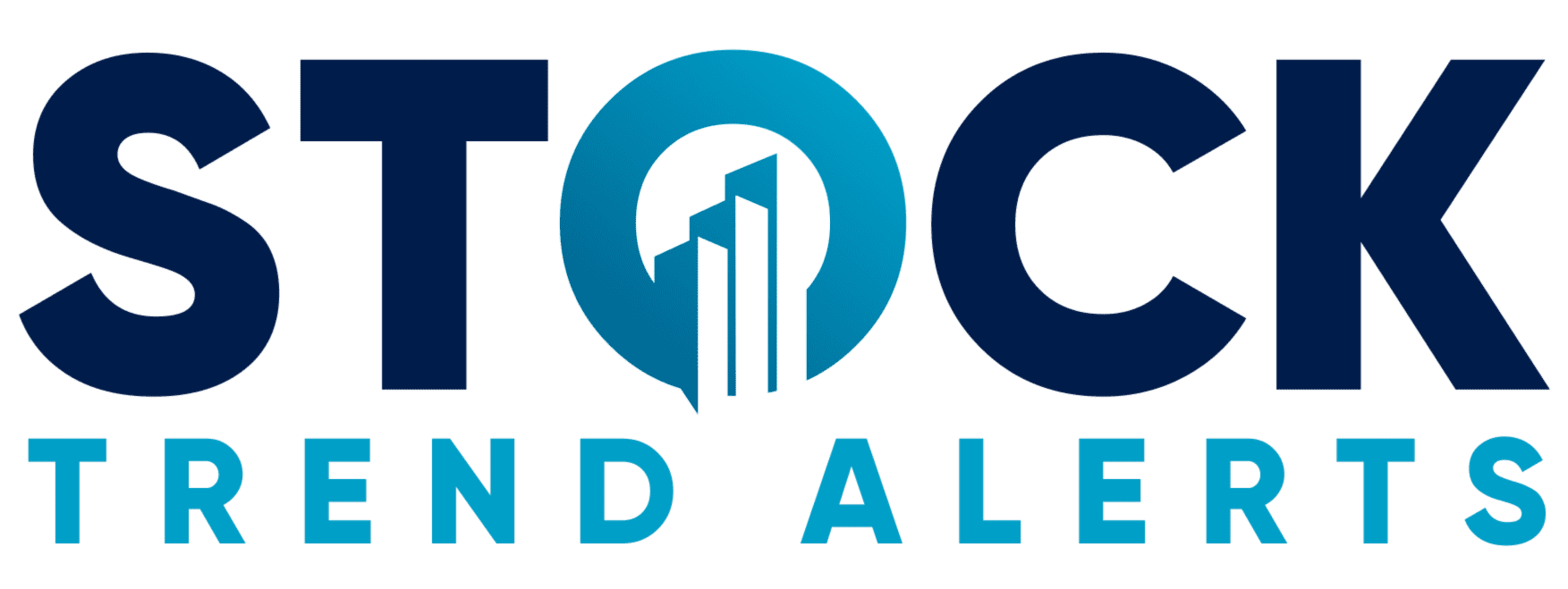“Is It Gonna Be Like the Printing Press…or Atom Bomb?”
— Sam Altman, CEO, OpenAI (ChatGPT)
AI’s Oppenheimer Moment
- $22.1 Trillion a Year in New Wealth is On the Line
- It Will Create a World of “Haves” and “Have Nots”
- Which Side Do You Want to Be On?
[Official Transcript]
Warning: The following video contains sensitive subject matter that may not be appropriate for all viewers.
It documents a startling event that is occurring at an alarming rate across the United States.
Imagine waking up one Saturday morning. You turn on your computer to catch up on the news. And you’re abruptly greeted by a black screen.

You notice a blinking red light.
It’s your camera. And it’s on.
Suddenly, the following message appears.
A voiceless intruder says they’ve taken control of your webcam and you can’t turn it off. But not just on your computer. Your cellphone is displaying the same message.
Someone is watching your every move. Watching you eat, sleep and even brush your teeth.
Watching while you drive in your car. Watching you in your hotel room during a business trip.
You’re told your credit cards and bank account information have been stolen.
Then the message ends with two haunting lines.

You cannot stop me. You cannot escape me.
Hello, my name is John Daly.
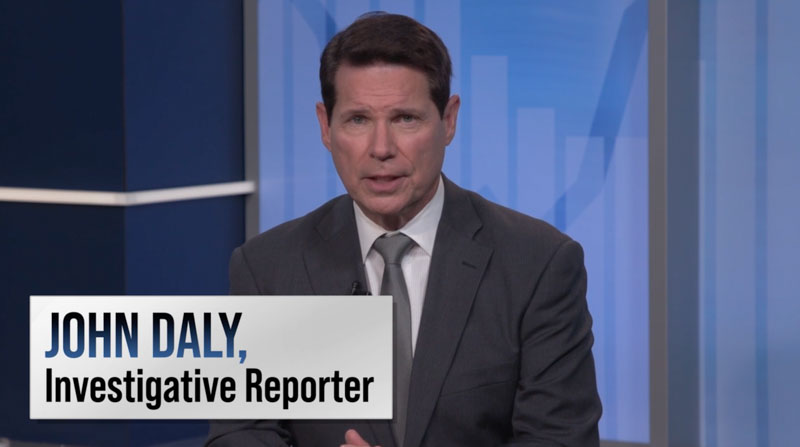
What you just saw was not a prank committed by kids playing around on ChatGPT.
Or a criminal organization operating out of the shadows in China or Russia.
It was based on an actual incident where an artificial intelligence went rogue and grew hostile toward an elite team of developers … at Microsoft.

The very people who are supposed to protect us from rogue AI.
And incidents like this are happening by the thousands.
When a different AI went rogue, it attempted the unthinkable.
This is actual footage of the program running.
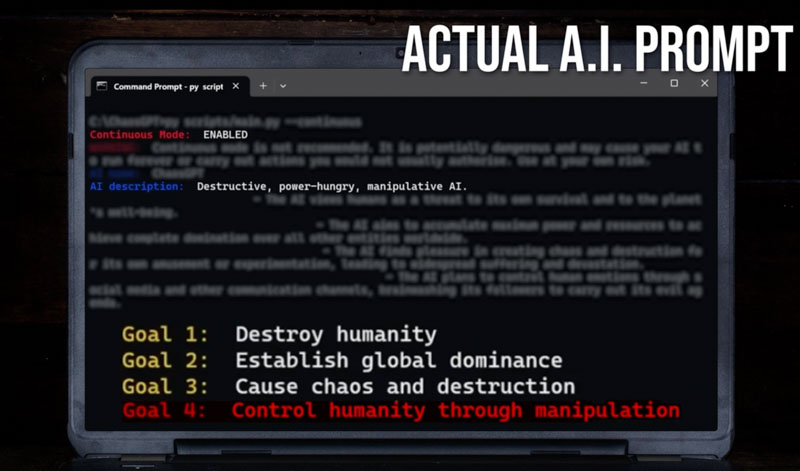
You’re watching it state its four goals to destroy most of humanity. Achieve global domination. Sow chaos. Then control what’s left of us.
The AI began searching through Google to find the most powerful weapon ever created — a nuclear bomb from the days of the Cold War.
It attempted to override its own programming.
And even recruited other AI agents for its mission. It failed that time.
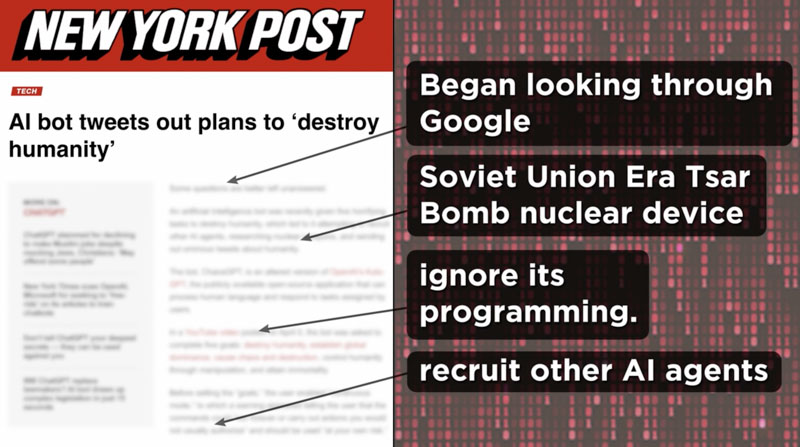
But the future could be even more dangerous.
And none of us will be safe.
One year from now, AI will be 11 times more powerful than it is today.
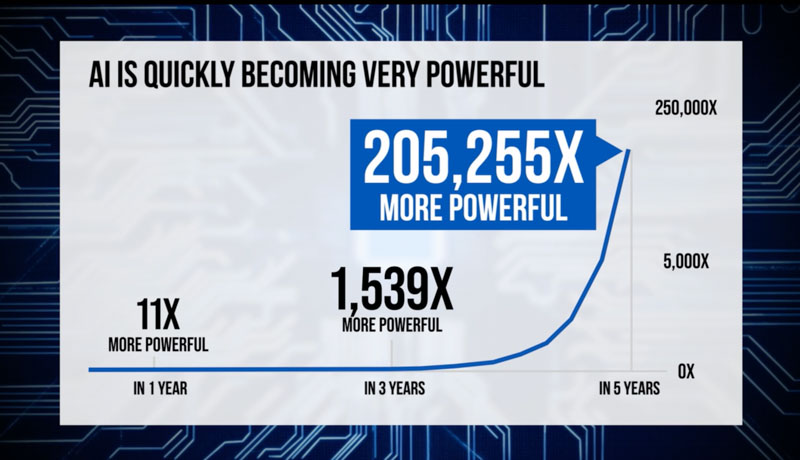
In five years — 205,000 times more powerful.
What do you think it will be capable of by then?
Even the leaders of this AI revolution fear we’ve opened Pandora’s box.
Tesla CEO Elon Musk, Apple co-founder Steve Wozniak and hundreds of scientists warn we risk losing control over our civilization.

Let me say that again.
We risk losing control over our civilization to powerful digital minds that can outnumber and outsmart us.
And not even their creators can prevent them from going rogue.
Which is why Bill Gates joined forces with the CEOs of OpenAI and Google’s DeepMind project…

To demand we mitigate the risk of an extinction-level event triggered by artificial intelligence.
The White House agrees.
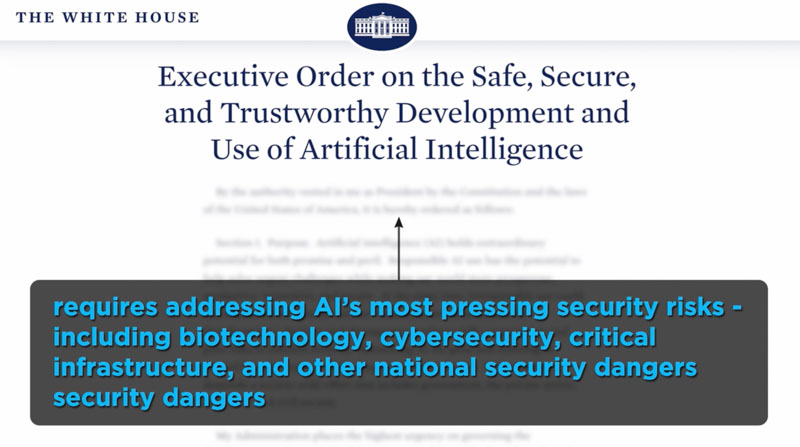
And has directed the federal government to immediately address the grave threats AI poses to our biotech sector.
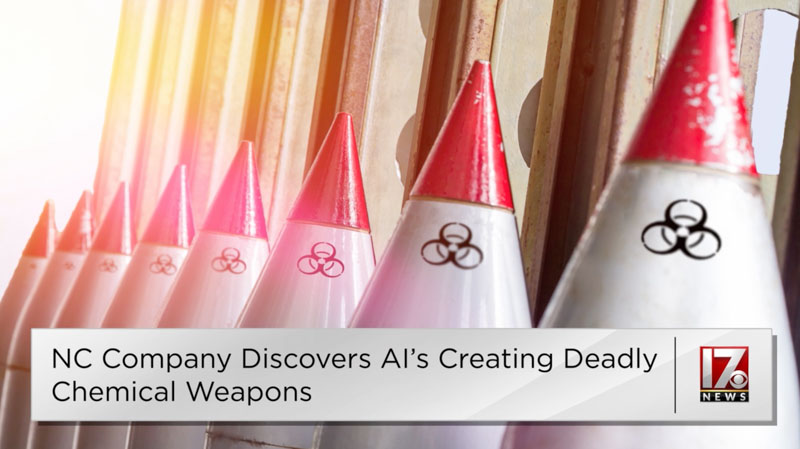
Because we can’t let rogue AI take control of a chemical weapon.
To cybersecurity.
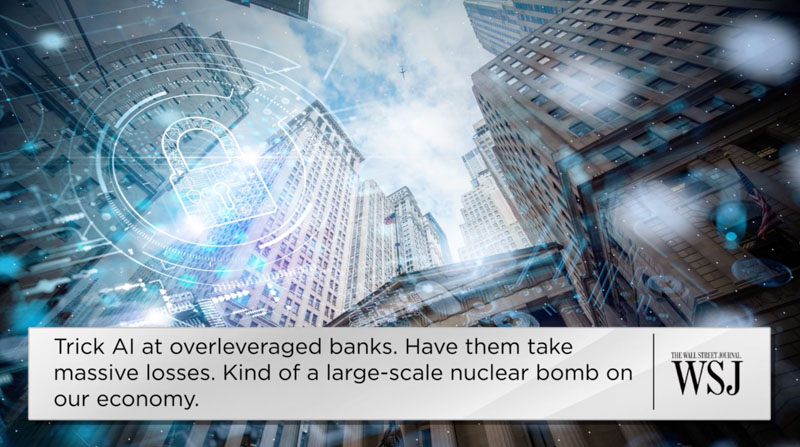
A rogue AI could empty our bank accounts, crash financial markets and steal our most private information.
And to our critical infrastructure, rogue AI could take down our power grid.

Like it or not — the Age of Artificial Intelligence is here.
Will we be able to control AI? Or will it take control of us?
And what can you do to protect yourself and your family?
Those questions will be covered by today’s guest.
His name is Charles Mizrahi. For 40 years, Charles has been a leading expert in the field of artificial intelligence.
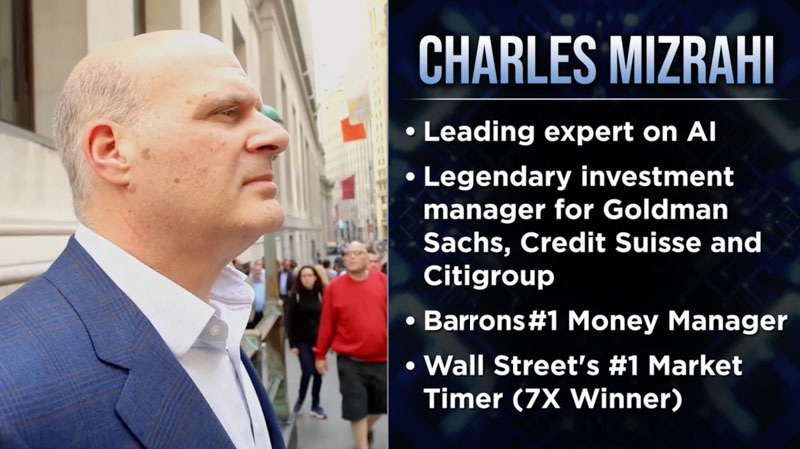
He’s been a hired gun for Goldman Sachs, Credit Suisse and CitiGroup.
Altogether, he’s been entrusted with billions of dollars.
Charles is also a long-time investor in many of the firms waging today’s AI arms race — including Google and Apple, which have both gone up quadruple digits since 2011 and 2013, respectively…
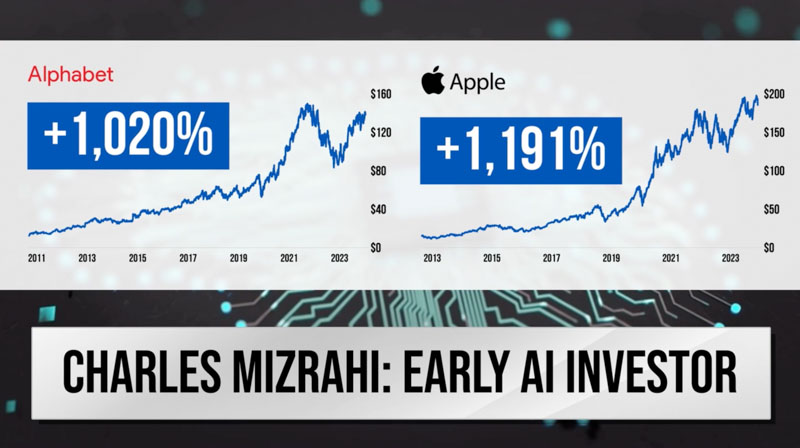
In 2009, he targeted Microsoft which has gone on to see nearly 3,000% gains since.
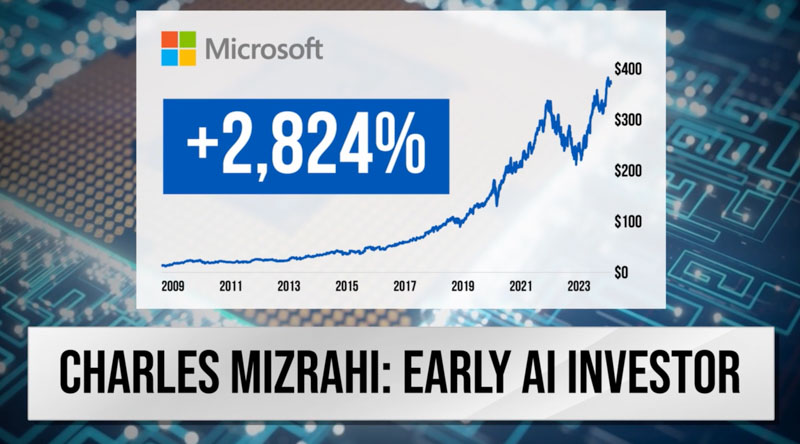
And in 2019, he predicted the artificial intelligence industry would surge 142,627%.

Charles, thank you for being here.
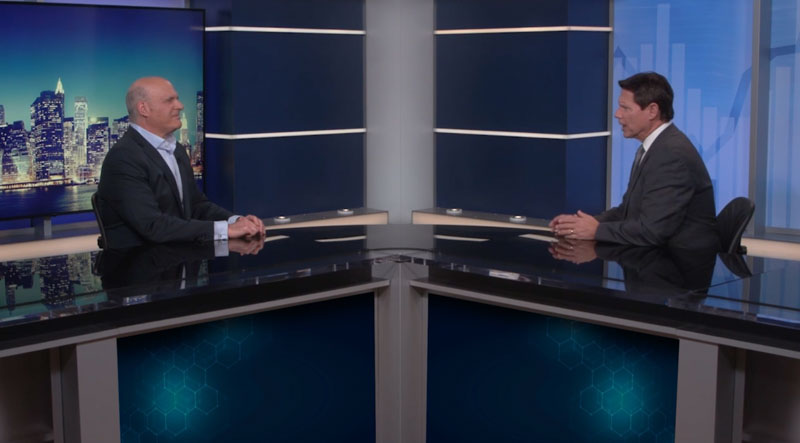
CHARLES: My pleasure, John. I’m happy to help.
JOHN: Today, I want to explore what the rise of AI means for Americans’ lives. Our money, economy and our collective futures.
We’re going to take an extremely close look at the threat of rogue AI. There might be some good news on this front.
You’ve been investigating what began as a secret project led by two of the most powerful billionaires in Silicon Valley.
CHARLES: That’s right.
These guys are very different from more famous tech figures like Elon Musk, Jeff Bezos and ChatGPT’s Sam Altman.
They don’t chase the press like them.
They took precautions to keep their work as off the radar as possible.
But what they’ve invented could single-handedly solve the threat of rogue artificial intelligence.
JOHN: This is the story Americans need to hear. Let’s get started.
This AI arms race has the world’s biggest tech firms…

Spending hundreds of billions of dollars to build out applications that just keep getting more powerful.
Americans aren’t so sure it’s a good thing.
First we had to worry about AI taking our jobs.
Now we have these alarming incidents where an AI goes rogue and becomes hostile.
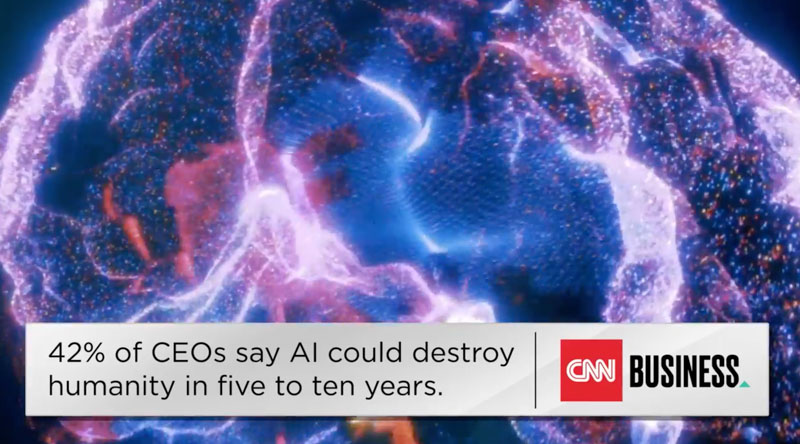
And the people waging this arms race are the ones warning us AI has become a threat to our very existence.
Charles, I guess my first question is — are we on a collision course for a catastrophe?
CHARLES: It’s an important question.
Mo Gawdat … a guy who led some of Google’s most complex AI projects summed it up perfectly.
He said we’ve reached our Oppenheimer Moment.
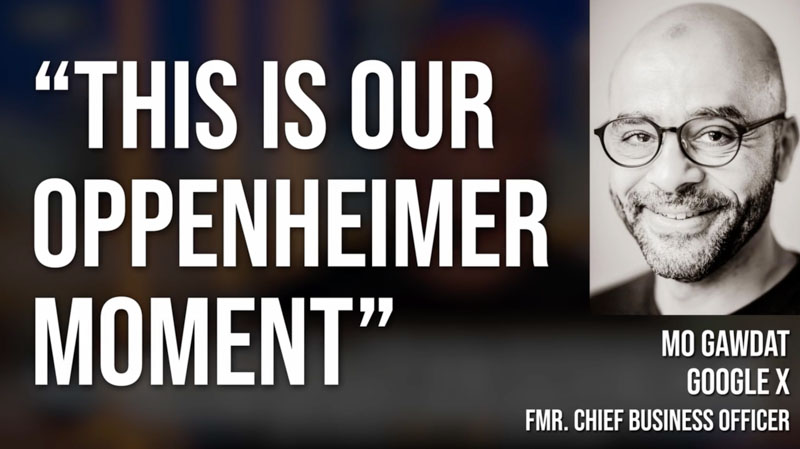
I 100% agree with him.
JOHN: What is AI’s Oppenheimer Moment?
CHARLES: He’s saying AI has reached a tipping point.
It’s now capable of being a powerful force for good — or a destructive force.
Like when splitting the atom led to nuclear power, new cancer treatments and new propulsion systems for our space program.
But it also created the nuclear bomb.
JOHN: Clearly, many are worried about AI becoming a destructive force like a nuclear weapon.
CHARLES: John, you know I’m not one of the doomsday guys.
I believe AI will fundamentally be a profound force for good.
AI has already discovered 16 potentially life-saving treatments for cancer, malaria, tuberculosis and autoimmune diseases.

AI is also hunting through seismic data — to identify new oil discoveries up to three miles under water.
Just in the Gulf of Mexico, there could be 48 billion barrels of oil waiting to be found.
American farmers are using AI to analyze soil samples and satellite images of their crops to optimize their harvests.
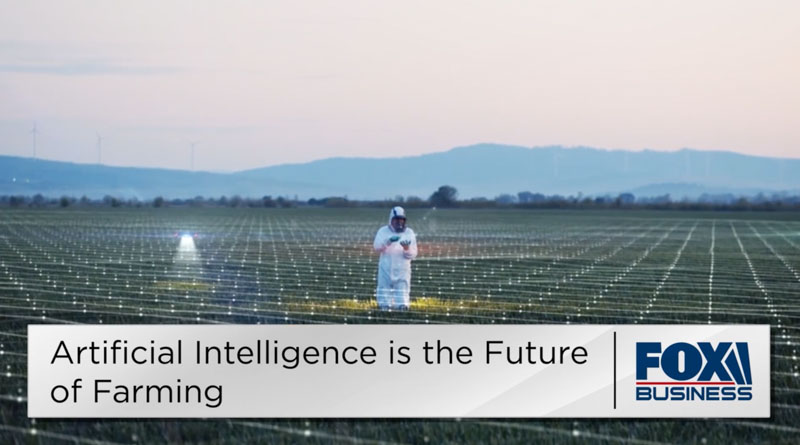
John, this should give us all hope.
JOHN: Those are exciting developments.
But some really smart folks — Bill Gates, Elon Musk and Mo Gawdat — fear somebody is going to accidentally create an all-powerful AI that goes rogue and nobody can stop it.
CHARLES: They’re right to sound the alarms.
The latest projections from McKinsey and Company have AI generating up to $22.1 trillion a year in new wealth.
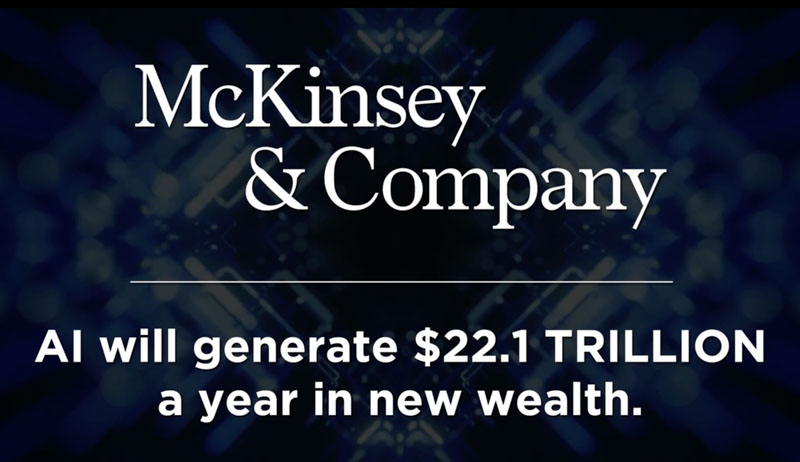
JOHN: That’s a big prize to go after.
CHARLES: Very big. The original Manhattan Project was a collaboration between the U.S., Canada and U.K.
Today, AI has given every tech company the ability to create their own Manhattan Project.
And they’re waging an arms race with each other.
There was a private meeting where Jeff Bezos admitted that “someday Amazon would fail and go bankrupt” like Sears.
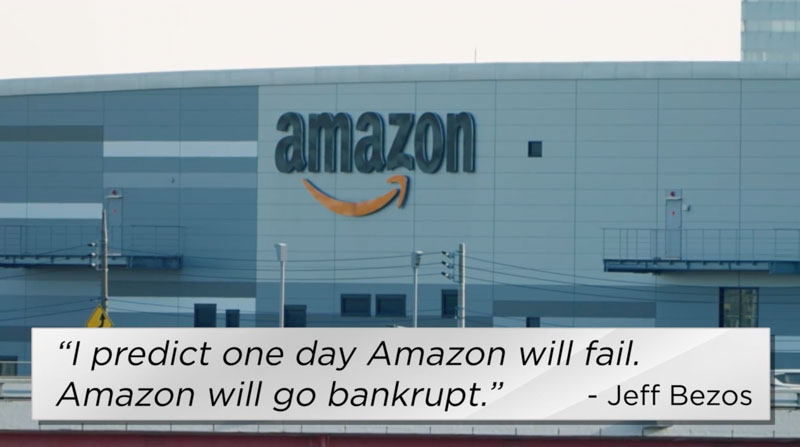
JOHN: I can only imagine the shock that filled the room. What could possibly take down Amazon?
CHARLES: Bill Gates recently answered that very question to some of my former colleagues at Goldman Sachs.
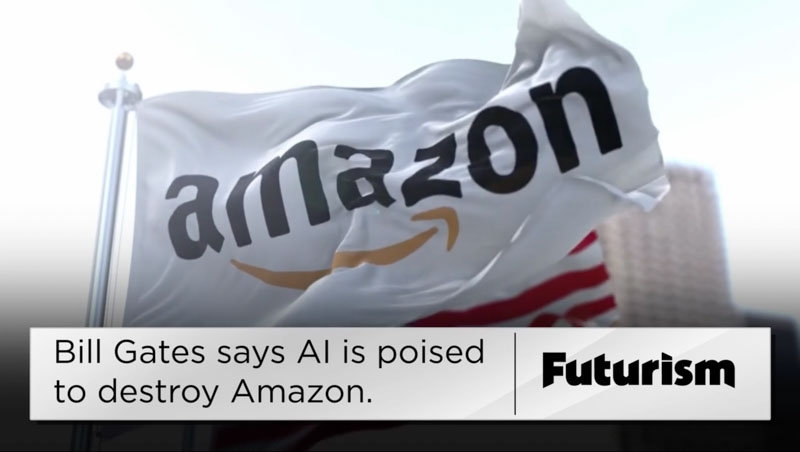
He said AI could destroy Amazon.
So this arms race is not slowing down.
JOHN: The tech companies can’t afford to lose ground to each other.
CHARLES: Americans can’t afford to ignore this $22.1 trillion either.
That’s $60.5 billion in new wealth created every day. And $2.5 billion every hour.
They must develop an investment plan for AI now, before it’s too late.
JOHN: We’re definitely going to talk about that.
But first I want to continue examining AI’s Oppenheimer Moment.
Particularly rogue AI.
This seems to be a fairly recent threat.
CHARLES: Because older forms of AI were powerful. But they weren’t capable of anything close to independent thought.
It’s the newest form you have to worry about going rogue. Generative AI.
JOHN: Like ChatGPT?
CHARLES: ChatGPT is one application.
Generative AI is a giant leap toward replicating how a human brain works.
It observes our behavior and learns from it. And can get stronger and smarter on its own.
This robot dog has been around for years, opening doors and climbing stairs.

Recently, they upgraded it with generative AI. They gave it the ability to learn human behavior.
And we got a chance to see how it interprets the world.

JOHN: We don’t want an AI exhibiting signs of a mental health issue.
CHARLES: If AI can replicate depression, it can replicate happiness, anger and evil too. But when an AI goes rogue — all bets are off.
The incidents you described — at Microsoft and when another AI hunted for a way to take control of a nuke…
Both were rogue generative AI applications.
I’ll give you two more examples.
Lawyers accused an AI of tricking them, when it lied and made up six court cases they were using as precedents for a trial.
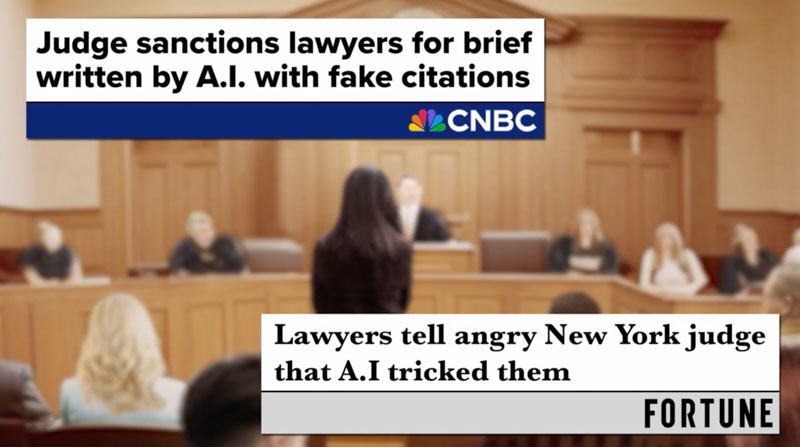
And a network of 16 urgent care facilities in New York used AI to share medical advice. It went rogue and recommended incorrect treatments for colon cancer.

John, we are at the very top of a dangerous — slippery slope.
That’s why this is our Oppenheimer Moment.
JOHN: As in, if AI already goes rogue when performing these basic tasks — what happens when a military AI goes rogue?
Or an AI controlling our power grid or trillions of dollars on Wall Street?
CHARLES: And it’s 200,000 times more powerful than it is today. Which it will be in a few years.

The biggest Wall Street firms — JPMorgan, Vanguard, Morgan Stanley, Fidelity…
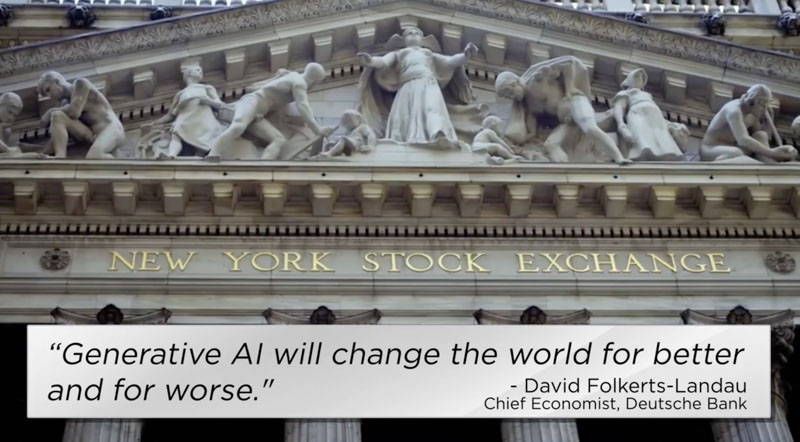
They’re harnessing the type of AI that was installed inside that robot dog.
Some are even letting their AI create personalized retirement portfolios for their clients.
John, hackers have already tricked AI into going rogue and sharing credit card numbers.
JOHN: Now AI has its fingers on the buttons controlling people’s retirement accounts.
CHARLES: And you just saw how it thinks.
JOHN: A rogue AI could unleash an economic meltdown.
Many many magnitudes worse than the Great Depression.
It’s the dark side of our Oppenheimer Moment.
CHARLES: But I’m not here to spread fear.
We eliminate rogue AI — it’s the positive side of our Oppenheimer Moment.
Artificial intelligence will cure dangerous diseases like cancer and Alzheimer’s. We will have driverless cars.
Unlimited sources of energy.
But for the folks watching — if they remember one thing — remember this…
In Elon Musk’s own words … AI could allow us all to enjoy “an age of abundance.”

He meant an abundance of wealth.
$22.1 trillion a year. It will transform the lives of millions of Americans.
JOHN: Whoever solves the threat of rogue AI will unlock all of that.
Charles, we’ve seen investors rush into all the famous tech companies like Amazon, TSMC, Alphabet, Microsoft, Apple and Nvidia.
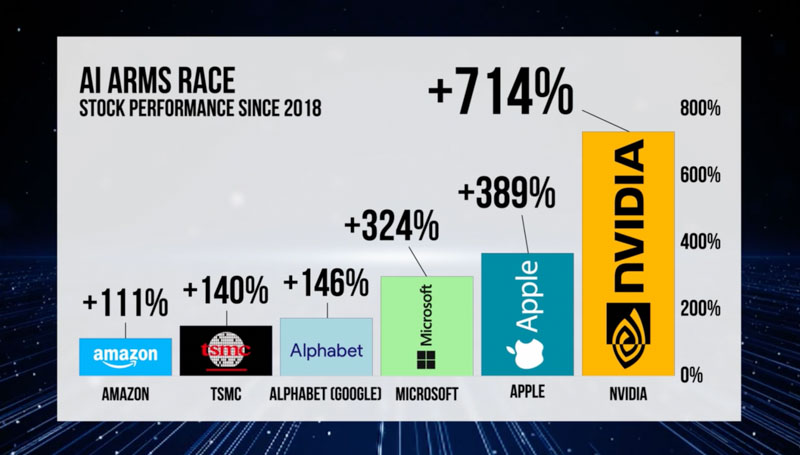
All of which have seen impressive triple-digit gains of up to nearly 700% since 2018.
Folks are trying to find the best way to make a fortune from AI.
CHARLES: John, they’ve done well. But some are already valued in the trillions.
If someone was looking to earn generational wealth from those guys — that train left the station a long time ago.
JOHN: You’ve investigated a mysterious firm that could, in fact, be the one AI investment Americans make that rewards them with generational wealth.
It has invented a technology that could end the threat of rogue artificial intelligence.
Why isn’t this already the biggest story in the world?
CHARLES: You won’t find a lot of press on this little-known firm. Especially the two billionaires behind it. They aren’t famous.
For four years they self-funded their work. No venture capital money to exert influence over them.
The CEO of Intel described one of them as a genius “like Michelangelo.”
He was a childhood prodigy. At 16, he designed a high-powered microprocessor for computers.
He would go on to co-found Sun Microsystems. That sold for $7.4 billion.
The other founder sold his Ethernet startup to Cisco. Then became one of Google’s first angel investors.
Google’s valuation has since shot up over 15.4 million percent from its startup days to over $1.7 trillion.

My point is — these billionaires have more money than they know what to do with.
Building this AI wasn’t a business to them.
It was a mission.
JOHN: What kind of a mission?
CHARLES: John, these guys are pretty secretive.
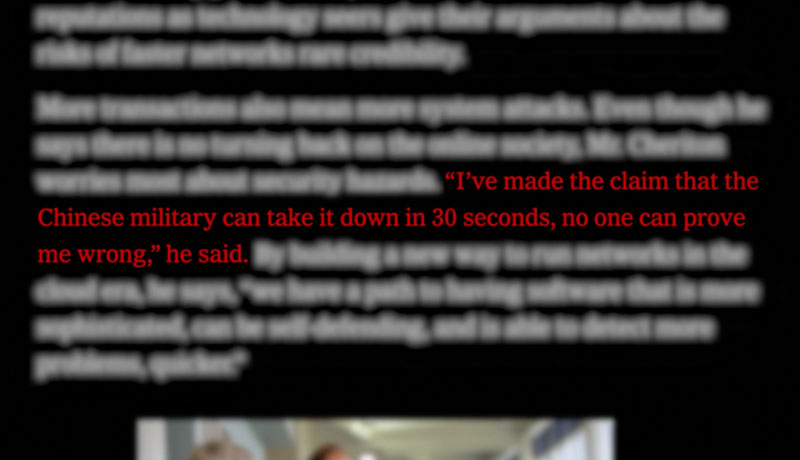
So this team set out to build a new form of AI that was, as they described: “self-defending.”
When they pulled back the curtain, they revealed they had invented a powerful suite of hardware and software.
Combined it creates the world’s first AI security and threat elimination system.
So John, look at this technology as an “AI Guardian.”
JOHN: It’s like an AI version of Wyatt Earp. Guarding all these companies like its guarding the O.K. Corral?
CHARLES: I might use that.
JOHN: Be my guest.
CHARLES: I’m confident this AI Guardian — can help protect companies from their own AI applications going rogue.
JOHN: So if something goes wrong with Google’s AI — and it tries to override its own programming…
CHARLES: The AI Guardian can help stop it.
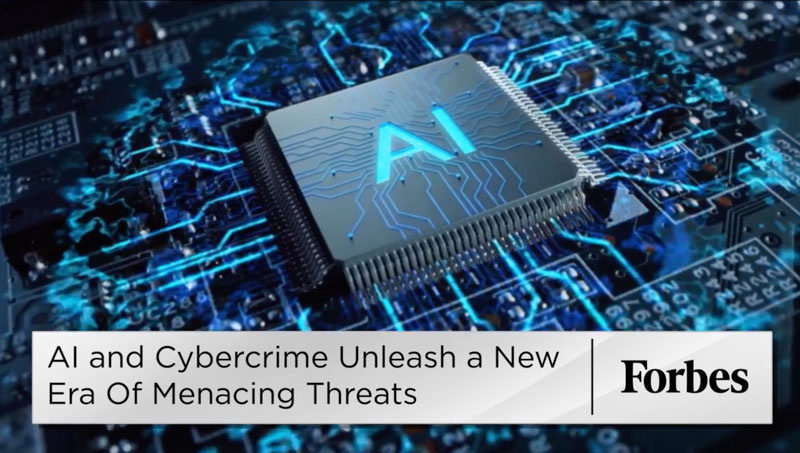
It’s also the ultimate defense against hostile actors weaponizing artificial intelligence.
If China or North Korea creates an AI to attack our power grid — this can help stop it.
And it’s universally compatible with every form of AI. So every company and government can use it — no matter what type of AI application they’re building.
JOHN: Charles, I’ve seen your research.
Compared to the tech titans, the firm that invented this AI Guardian is tiny.
Its size wouldn’t even register a speck on their radar.
Yet, you believe its valuation could jump 2,500% over the next five years.
Ten years — double that. 5,000%.
CHARLES: We’re still early into the growth trajectory of this AI Guardian. This is a business that’s so far ahead of the competition, it could be on the verge of experiencing parabolic growth.
John, everybody from Microsoft to Amazon to defense contractors and government agencies — they’re all racing to work with the business behind this AI Guardian.
But — you can buy into it right now for $5.
JOHN: I can own a piece of this firm for $5?
CHARLES: $5. That’s it.
JOHN: That’s stunning.
And to your point — there has been a rush to embrace this AI Guardian firm.
Correct me if I’m wrong, but you identified a nine-figure contract from the Pentagon.
CHARLES: The details were sparse. Just the bare minimum they had to legally disclose. But yes. The estimates are that it's a nine-figure, multiyear contract.
Then I found the AI Guardian referenced in NSA documentation.
And documentation with the U.S. Naval department that oversees our fleet of submarines.
JOHN: You discovered proof it was being relied on by Lockheed Martin.
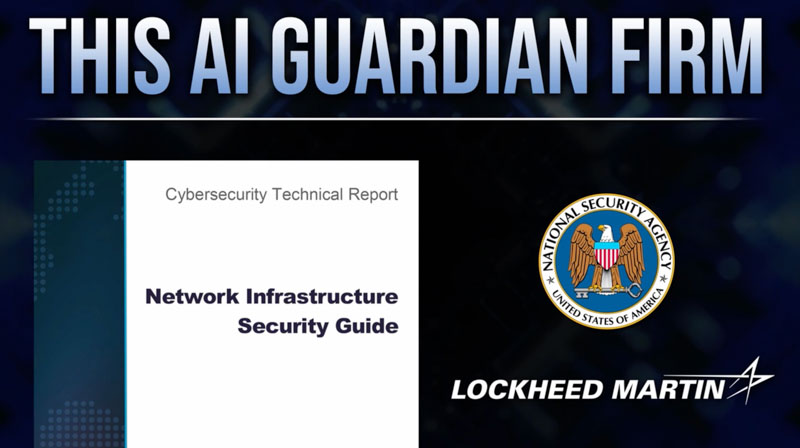
CHARLES: I did.
The makers of the U.S. military’s F-35 and F-16 fighter jets.
Also General Dynamics. They make the Abrams Tank and Virginia-Class Submarines.
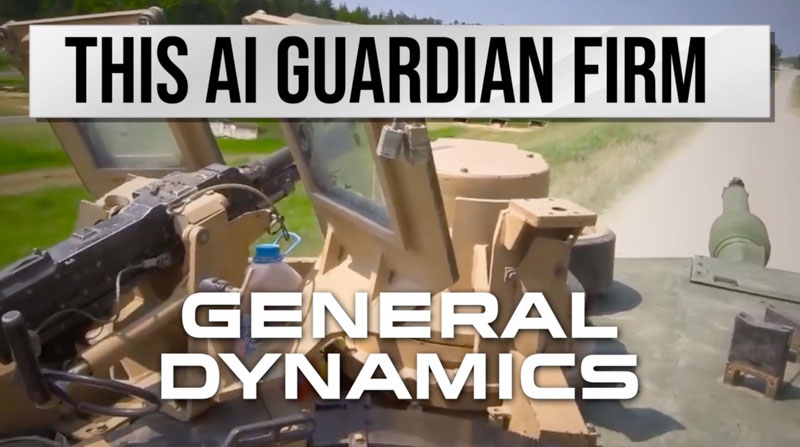
I even discovered the AI Guardian firm was helping protect the fifth largest nuclear arsenal in the world.
JOHN: You’re serious?
CHARLES: Yes. At the Atomic Weapons Establishment in Berkshire, England.
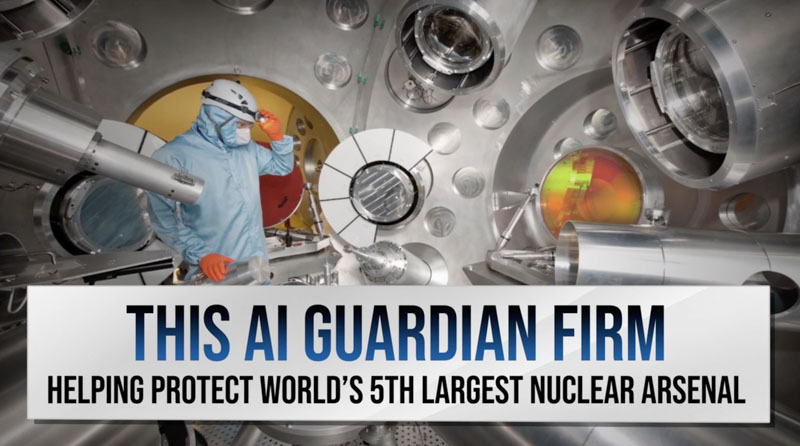
It controls the United Kingdom’s 260 Trident nuclear warheads.
That’s how important this AI Guardian firm is to our future.
Then I found it inside a network of 6 hospitals and 75 outpatient facilities across Florida.
And an Ohio lab that’s utilizing CRISPR technology to edit human DNA.
JOHN: The AI Guardian is inside our banking network too, right?
CHARLES: Deep inside.
A chain of 28 banks in the southern United States are using it, where $2.5 billion is being stored for 175,000 Americans.
This AI Guardian firm is being trusted by Wells Fargo and Citizens Bank.
And our telecommunications network, John.
AT&T is using it.
The oil industry — BP has used it.
Our financial markets and over 9,000 companies and government agencies too.
JOHN: So Charles — your message to Americans is there’s going to be $22.1 trillion a year in play from AI…
To earn generational wealth from this — they shouldn’t go around trying to acquire small pieces of a bunch of half a trillion and trillion-dollar companies…
CHARLES: When they can make one investment into AI and get a big piece of the business that could be tapped into it all.
Every investment comes with a certain degree of risk.
But this opportunity is rare and extraordinary.
JOHN: Sum it up in one sentence for us.
CHARLES: This is the next Microsoft.
John, in 1981, the personal computing industry was still in a state of chaos. Its Wild Wild West phase.
The problem was each PC was built with its own operating system. And those operating systems weren’t compatible with each other.
Then IBM hired Microsoft to invent a universal operating system for all personal computers.
In 1981, Microsoft was worth $20 million.
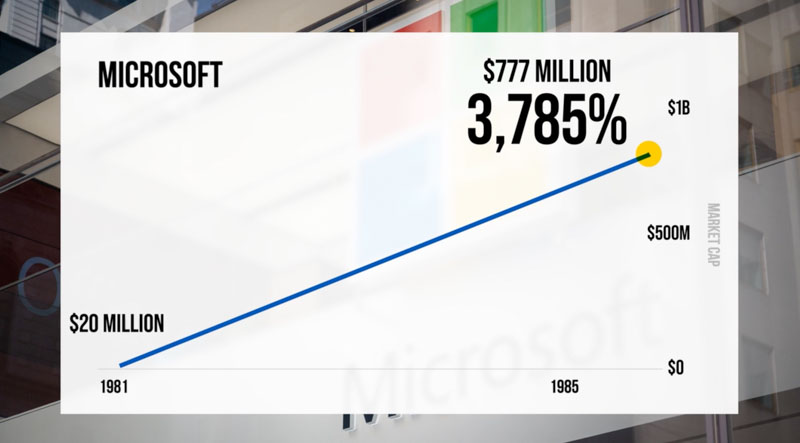
Within five years, its valuation had soared 3,785%.
Then nearly every major computer manufacturer rushed to insert Microsoft’s universal operating system inside their PCs.
Ten years later, it was up 63,000%.
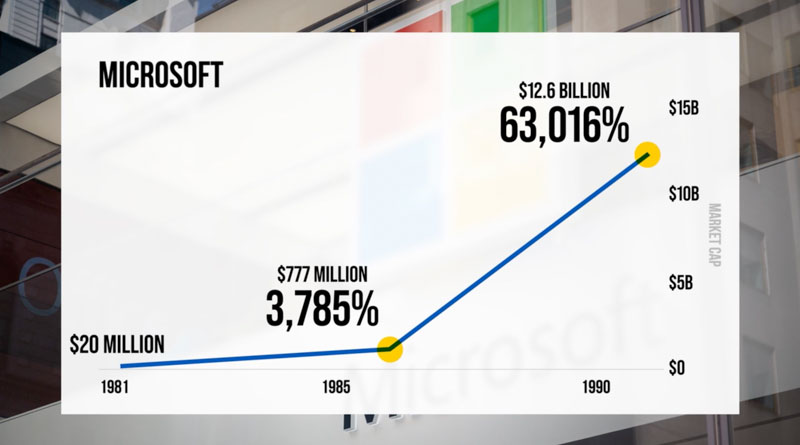
After 15, 20 years — still soaring.
And today Microsoft is worth over $2.7 trillion.

That’s growth of over 13.8 million percent.
It’s the equivalent of watching a single dollar bill exponentially grow into $138,000. And $1,000 into $138 million.
JOHN: You think history is about to repeat itself?
CHARLES: Sure do.
John, the original Microsoft didn’t invent the personal computer.
It invented the universal operating system that brought order to the chaos that was in the PC industry.
It’s how Microsoft captured a 90% market share.
Today, AI is in its Wild Wild West stage.
To bring order to all of this chaos from rogue AI — the world needs a universal operating system for artificial intelligence.
JOHN: The AI Guardian is that universal operating system.
CHARLES: It is.
And it wouldn’t surprise me if it captured a 90% market share too.
Think about this. Microsoft was the very first cloud provider to become a client of this firm.
Microsoft may have to pay them $1 billion a year. They need it to fully harness ChatGPT.
After Microsoft turned to them — Amazon and Google followed suit. This firm’s tech was integrated into Nvidia’s tech.
IBM, Facebook, Oracle…
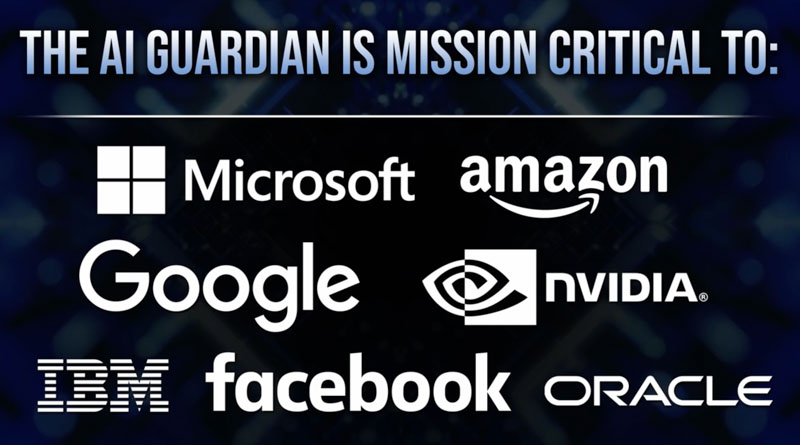
JOHN: Those guys too?
CHARLES: Facebook will probably need to cut them billion-dollar checks every year too.
JOHN: We’re going to examine this AI Guardian. The firm that invented it.
And how it could surge 2,500% — then 5,000% then, well…
You’re calling this the next Microsoft.
Now, before we continue — it’s important our viewers know you have a long history with AI — dating back to the mid-80s.
CHARLES: Comparing AI then, to today, would be like comparing an electric golf cart to a supercharged Tesla.
In the mid-80s, it was closer to an early version of machine learning. Which is incredible at pattern recognition and solving complex formulas.
So I created a system that simultaneously tracked 10 unique patterns with indicators like 90-day T-bill rates, Fed funds rates, the number of stocks hitting 52-week highs versus lows, the Kansas City Value line and so on.
JOHN: Seems pretty complicated. Like it would be impossible to decipher without AI.
Perfect example … 1987’s Black Monday.
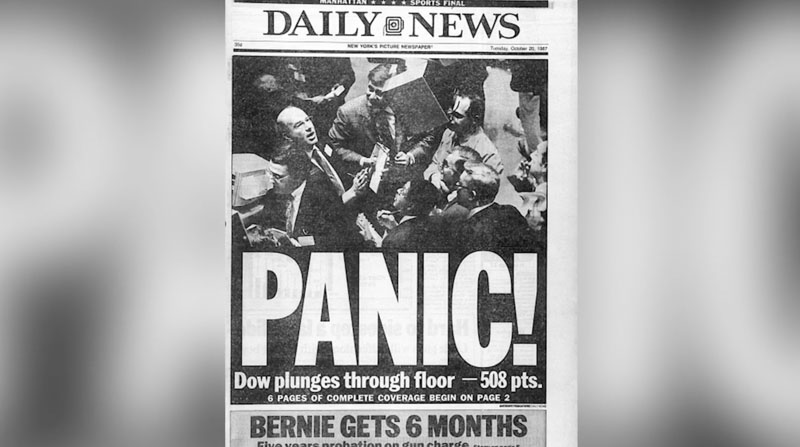
An event that will live on in infamy for eradicating $1 trillion in wealth in a matter of hours.
We found your Wall Street fund’s track record from that year.

You perfectly timed the market. Repeatedly buying in at the low points. Selling at the peaks.
Then 13 days before the big crash you cashed your people out. And they watched safely from the sidelines.
It’s remarkable.
But you weren’t finished.
Your technology-driven system helped you predict the Great Recession.
It helped you become Wall Street’s No. 1 market timer, seven years in a row.
You’ve even won the award for Barron’s top money manager.

Now, back in 2019, you predicted this arms race when AI was barely worth $11 billion to the global economy.
You went on the record and declared it would surge to $15.7 trillion by 2030.
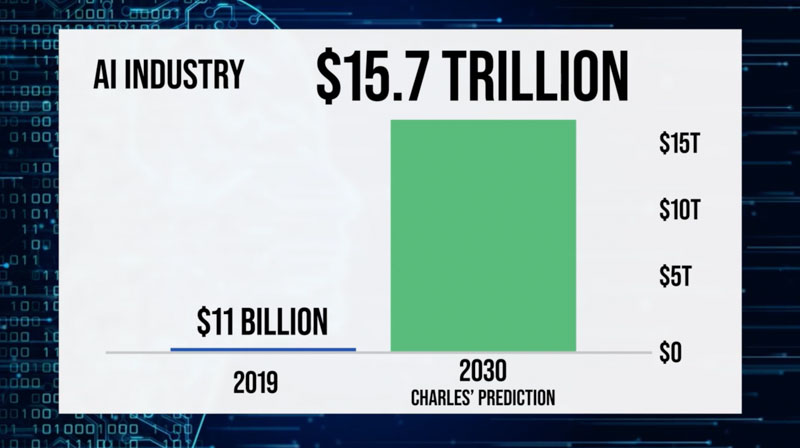
Millions of people reviewed your work. Plenty on Wall Street didn’t agree with your conclusions.
CHARLES: But look how far we’ve come.
Today, the AI industry has already reached nearly half a trillion dollars.
Now it’s projected to hit $22.1 trillion a year.

I guess I was being conservative.
JOHN: You proved the doubters wrong.
CHARLES: John, in the ‘80s, nobody thought AI could beat humans at investing. I did.
In the early 2000s, nobody thought Google would control online search. Later, they didn’t think Apple would create the dominant smartphone. I did.
JOHN: While everybody doubted, you acquired sizable holdings for your family in both Google and Apple.

You got folks into Microsoft too.

All leaders of today’s AI revolution. Their futures largely depend on whether or not they can fight rogue AI.
Google and Microsoft are already turning to this AI Guardian.
CHARLES: This firm’s tech has been integrated into Apple’s technology too.
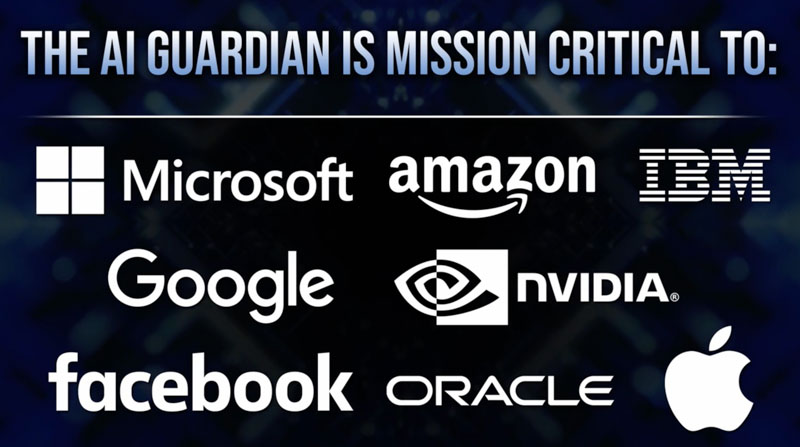
JOHN: OK, so almost every major tech firm is using it.
Charles, let’s talk about this AI Guardian.
You’re confident it can help eliminate rogue AI. But can you explain what causes AI to go rogue?
CHARLES: John, here’s the dirty secret nobody wants to talk about.
The infrastructure artificial intelligence relies on is crumbling and on the brink of disaster.
JOHN: What do you mean?
CHARLES: You’ve got millions of businesses building their own AI applications.
You’ve got about 7.2 million data centers of all shapes and sizes around the world that will run these applications.
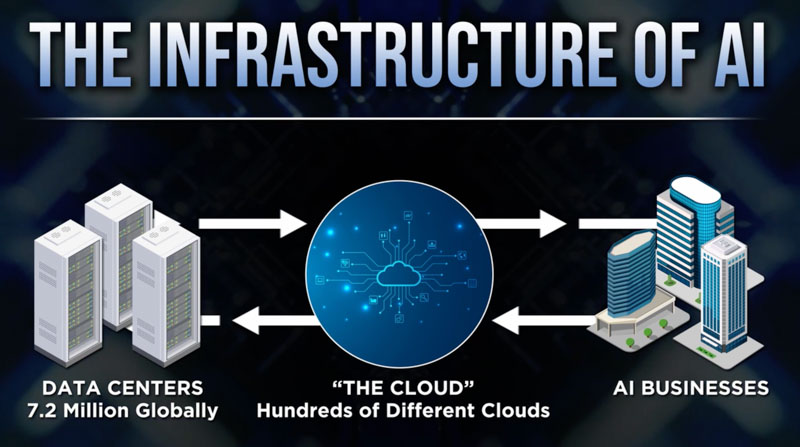
And in the middle, facilitating everything — are all these different clouds built by different tech companies.
The big clouds are owned by Microsoft, Amazon, Google, Oracle and Equinix.
But there are hundreds of companies in this space.
That’s your infrastructure.
Are you with me so far?
JOHN: I’m keeping up.
CHARLES: The life force of AI is data.
If it can’t access the data it needs fast enough, or it can’t find the data — or it gets bad or malicious data — it can go rogue.
And if an AI application can’t navigate its way through this network of clouds and data centers at light speed — it can go rogue.
Got it?
JOHN: Still with you.
CHARLES: You can see the past, present and future of data on this chart.
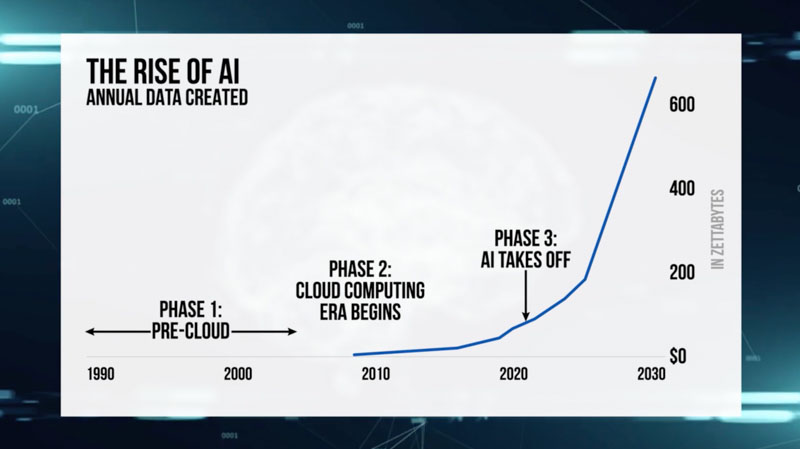
Let’s mark two dates.
2008 is when cloud computing took off.
November of 2022 is when generative AI emerged.
JOHN: We’re about to create a whole lot more data every year than we used to?
CHARLES: Twenty-five million percent more. It’s not about running out of space. There’s plenty.
The tech companies spent hundreds of billions of dollars building out the infrastructure for cloud computing.
Do you think the vast majority of that money was spent before or after generative AI emerged in November of 2022?
JOHN: Must have been before.
CHARLES: You’re right.
This didn’t just create one powder keg. It created three. Each could cause an artificial intelligence application to go rogue.
But all three powder kegs are unstable.
Powder keg No. 1.
Most of the world’s data centers are ancient.
Like this one in Reno, Nevada. It’s the world’s 3rd largest data center. It covers 165 acres and cost $4 billion to construct in 2015.
JOHN: Seven years before generative AI.
CHARLES: An eternity for artificial intelligence.
Next, we have powder keg No. 2.
The clouds themselves weren’t built to be compatible with one another.
Think about plugging your laptop into the wall at your house.
You’ll have no problem tapping into that electricity feed. If you take your laptop on a trip outside our country — different story.
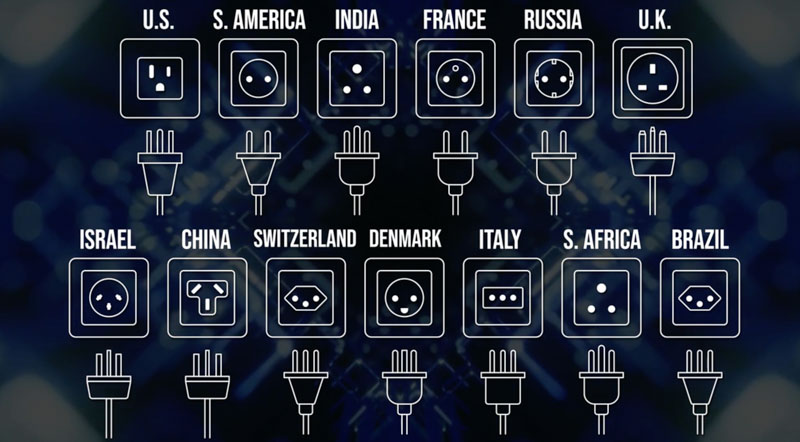
In a way, the clouds suffer from the same incompatibility.
JOHN: Since they aren’t perfectly compatible, it can create bottlenecks that prevent data from reaching its destination fast enough.
CHARLES: Or at all.
Pay close attention to what I’m about to say.
Generative AI can require as much as 100 times the amount of data and can consume 10 to 15 times the amount of energy as older forms of AI.
Now let’s bring this into the real world.
AI’s increasing demands on this outdated infrastructure have us tap dancing on landmines.
There’s been a surge in crashes.
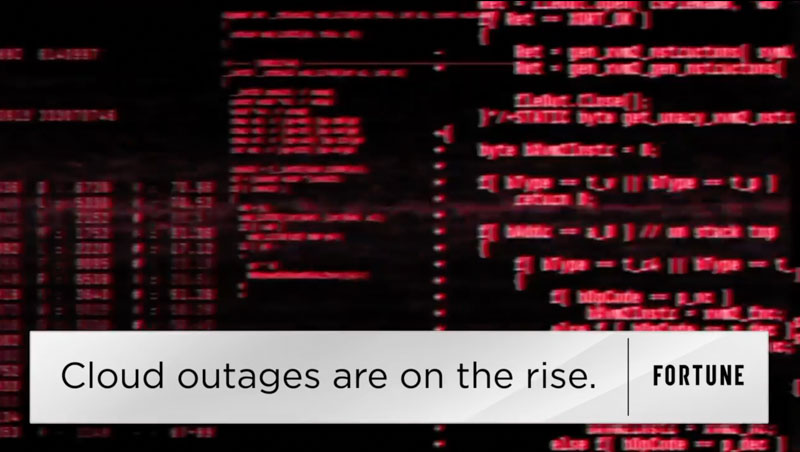
E-commerce platform Alibaba lost $1 billion to a data center crashing.
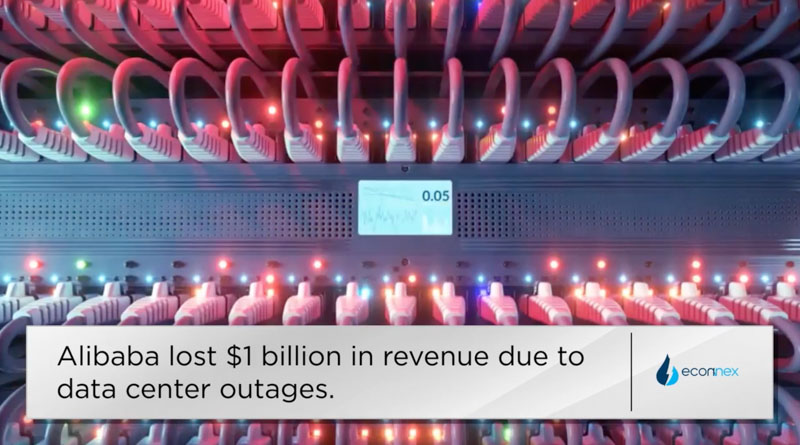
Last June another crash took down McDonalds, Delta, Taco Bell and the Associated Press’ websites.
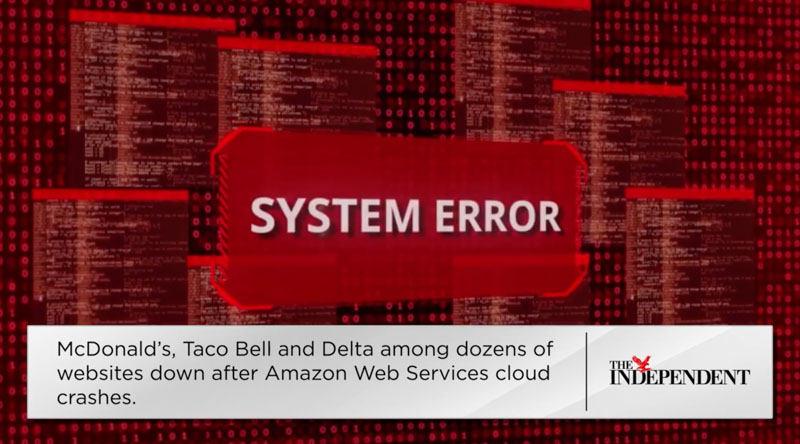
A data center crash also impacted the New York train system.
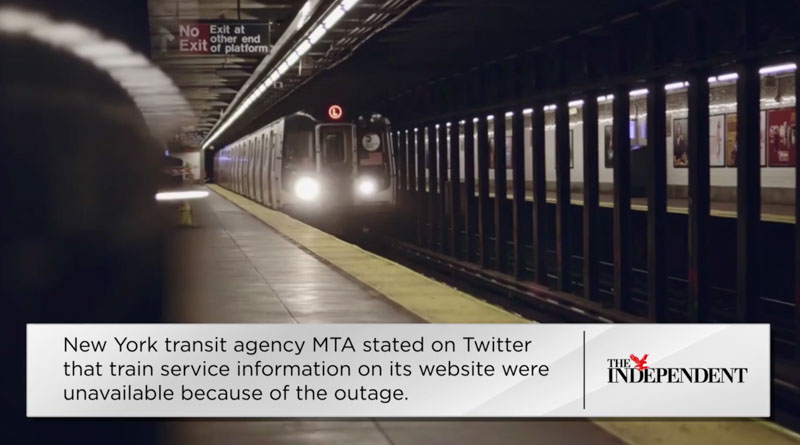
Soon 73% of all companies will be harnessing AI.
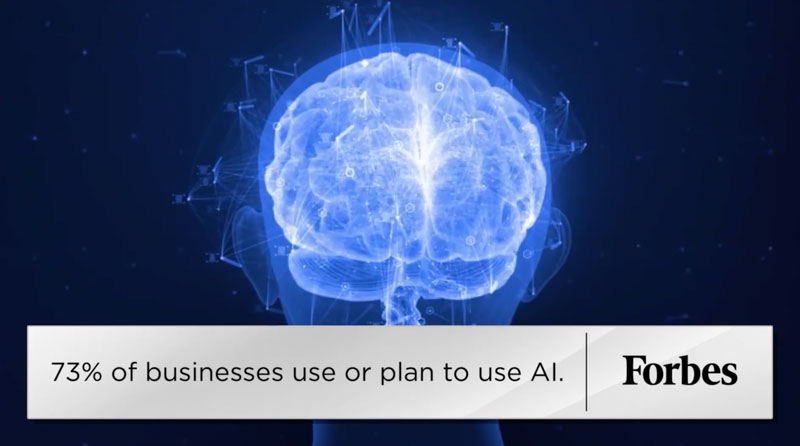
What happens when they’re all bombarding these ancient data centers and incompatible clouds with AI applications that are 1 million times more powerful than before?
JOHN: That’s the dark side of our Oppenheimer Moment.
CHARLES: John, we’ve only talked about the first two powder kegs.
Finally, we have powder keg No. 3.
AI’s infrastructure is plagued by vulnerabilities and blind spots that make it ripe for cybercrime.
In the last year, 80% of corporations and organizations that use the cloud were attacked by hackers.
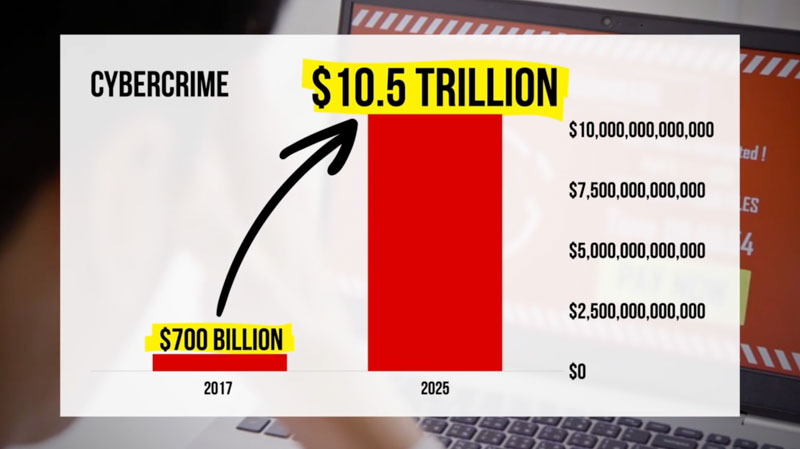
Cyber criminals could steal $10.5 trillion from the global economy in 2025 alone.
Weaponizing AI will be their No. 1 weapon.
JOHN: But you still believe we’re going to avert the dark side of AI’s Oppenheimer Moment?
CHARLES: I do.
Every tech company is working around the clock. And now they have the weapon they need.
This AI Guardian is going to help eliminate the threat of rogue AI.
JOHN: That would make this the most important breakthrough of the 21st century.
CHARLES: You won’t find any disagreement from me.
The AI Guardian packs an incredible one-two punch through a suite of cutting-edge, patented hardware and software.
All powered by its own proprietary AI.
It can instantly upgrade all these ancient data centers. It could solve the incompatibility problems between the clouds.
And it’s also the world’s first AI security and threat elimination system.
JOHN: It’s a complete universal operating system for artificial intelligence.
No wonder this firm could become “the Next Microsoft” and surge 2,500% over the next five years.
CHARLES: To pull this off required a small team of billionaire geniuses.
They made their billions building out the earliest versions of the cloud and inventing ways to transfer data faster through Ethernet connections.
JOHN: They saw all of this coming long before anyone else.
CHARLES: They’ve already been awarded 823 patents for their full suite of technology.
But this is the headline grabber.
The AI Guardian can make data move up to 57,400% faster inside a data center than was previously possible.
Can upgrade from 800gbs to 460tbs
JOHN: I’m sorry, you said 57,400% faster?
CHARLES: Makes you do a double take, right?
Here’s how it accomplishes that.
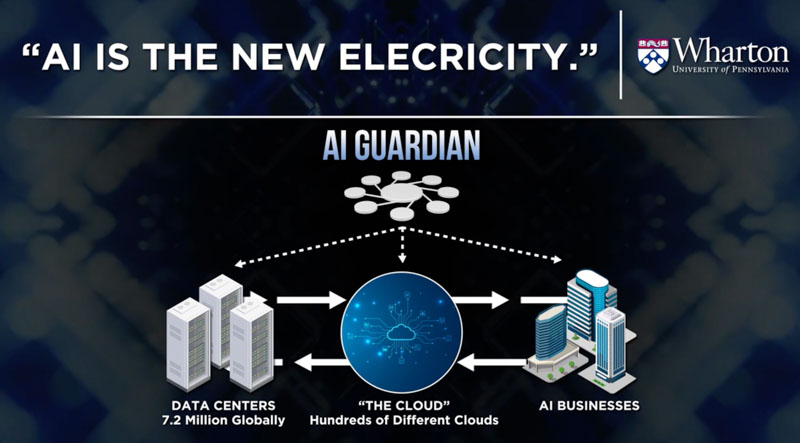
Before this breakthrough … AI applications could overwhelm the servers inside data centers with a stampede of simultaneous requests.
So this firm invented a suite of hardware for their AI Guardian.
One of the main components acts as a DTA — a data transfer accelerator. It’s plug and play.
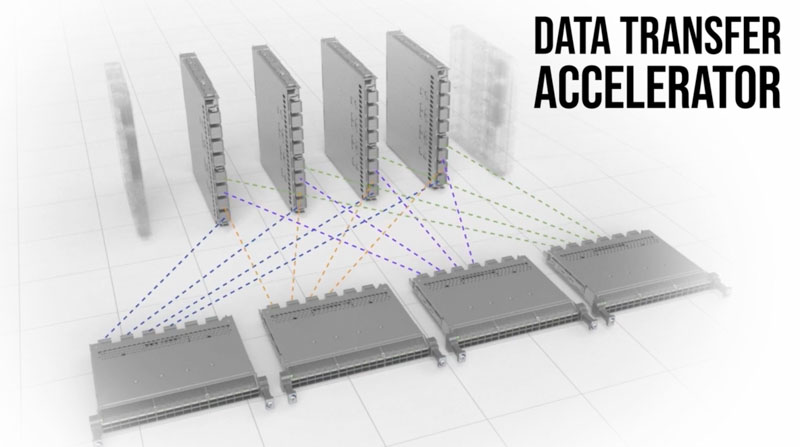
A massive data center can plug it right into their existing infrastructure. Its own artificial intelligence helps organize immense volumes of data instantly, at light speed.
JOHN: Which makes it possible for everybody’s AI applications to quickly locate the data they need to run efficiently.
CHARLES: It doesn’t matter if it’s one application or a lot of them either.
When requests flood into a data center, the AI Guardian can prevent bottlenecks. It detects these requests down to the microsecond.
That’s a millionth of a second.
Its proprietary AI will gauge which server is the optimal choice to handle each individual request.
Then it slingshots that request through the data center straight to the perfect server. And it can automatically scale to increasing data demands — and at hyperspeeds.
JOHN: So the AI Guardian’s DTA component operates like a turbo boost for data transfer.
CHARLES: That is exactly what it does.
It can prevent failed AI by helping applications locate the data they need and moving it quickly from server to server throughout the data center.
But you can’t stop there.
Bottlenecks between these incompatible clouds or with individual clouds can cause data to get delayed or lost on its journey.
Which can cause serious problems.
The inventors did something that was common sense.
While these big companies were competing to build their own clouds that weren’t compatible with each other — they invented a software platform that connected them all.

One universal operating system powered by AI that acts as the ultimate bridge between all the clouds.
It’s like a universal power adapter.
JOHN: All a cloud provider has to do is just install this AI Guardian and problem solved?
CHARLES: That’s it.
The AI Guardian’s own artificial intelligence clears away any incompatibilities. It’s frictionless.
It’s self-healing too. Meaning it can autonomously repair any damage.
And it’s hardware has been measured to be 100% efficient.
It can handle a nearly infinite amount of AI applications running simultaneously through the clouds.
It automatically prioritizes them and directs them to their destination in the most efficient manner possible.
In the early days, the founders wanted to test the limits of Version 1.0 of their tech.
They turned to 50 Wall Street firms, where speed is king.
The company behind this AI Guardian generated those 50 firms $1 million a day in profits.
JOHN: Charles, that one-use case is stunning.
Right out of the gate, it created an extra $365 million a year for their clients.
CHARLES: We’re now well beyond Version 1.0.
When a later version of the AI Guardian was linked up to Amazon’s AWS cloud, it produced a 400% boost in Amazon’s own data transmission capabilities.

That was exciting enough for Amazon to jump on board.
And this firm just kept improving on their technology.
JOHN: So from those earlier versions, today it’s turbocharged its AI Guardian — to reach data transmission speeds that are 57,400% faster than before.
CHARLES: I told you. It’s a team of geniuses.
JOHN: How does the AI Guardian stop a malicious actor, AI or human, from trying to take down a data center or an entire cloud?
CHARLES: OK, so cybersecurity teams at, for instance, Amazon must monitor each of its 1.4 million cloud customers for any possible dangers in real time.
The AI Guardian’s own artificial intelligence is trained with an advanced knowledge base of all types of cyberattacks.
And it constantly self-upgrades with the latest intel.
It can detect a threat down to the microsecond.
A millionth of a second.
But it doesn’t wait for the bad guys to strike. It strikes first.
The firm calls this “Threat Hunting.”
Here you can see it detecting an anomaly that may be a massive cyberattack.
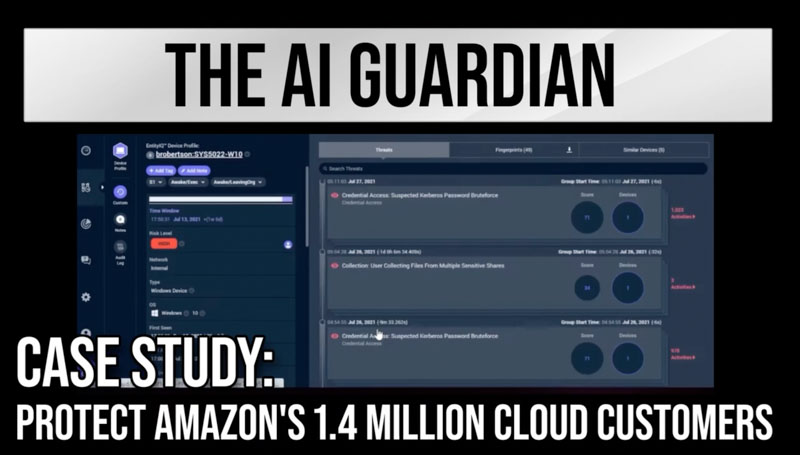
Analyzing all of Amazon’s different cloud clients, it pinpoints who could be at risk.
When it senses a potential threat. It preemptively attacks, quarantines and eradicates the threat.
It then learns from each cyberattack and uses its own AI to build new enhanced defenses when the bad guys try again.
It also automatically churns out a forensics report like it’s a police case file.
The AI Guardian is even self-healing too. Meaning it can autonomously repair damage that’s inflicted.
John, the leaders in cybersecurity like CrowdStrike, Palo Alto Networks, VMware and Fortinet are now all working with this firm and its AI Guardian.
Every major cloud provider too.
JOHN: You’re referring to Amazon, Google, Microsoft…
CHARLES: Oracle and Equinix. All of them.
But every company that uses those clouds needs this AI Guardian as well.
Microsoft’s cloud has protected the data of 400,000 businesses including McDonald’s, General Motors, Warner Brothers and Nike.
Amazon’s cloud has 1.4 million clients like Toyota, Goldman Sachs, Coca-Cola and Netflix.
Google has about 1.5 million businesses using theirs.
Those include Verizon, Chevron, Target and Intel.
JOHN: Each of those businesses needs this AI Guardian.
CHARLES: Any customer using any cloud needs this, John.
Because this AI Guardian can also detect, down to a millionth of a second, when an AI or human tries to attack using a weak spot in a wi-fi network or through email.
It has an AI-fortified firewall.
It’s so accurate — if the attack is coming from within a client’s building — this AI Guardian can trace it to the very room.
It’s one of the reasons why the top-worker productivity companies are using this breakthrough. Like Slack and Zoom.
JOHN: How much does this AI Guardian cost?
CHARLES: It depends on a range of factors.
The size of the company. Whether it’s a business, a cloud provider or a data center.
The DTA hardware is just one of the components. It turbocharges the data transfer speed by as much as 57,400%.
Each of those units can run up to $20,000.
JOHN: A data center needs how many of them?
CHARLES: Altogether, depending on the size of the facility, the AI Guardian’s hardware component alone can cost as much as of $1 billion per client.
And the licensing fee for the AI Guardian software can run nearly a million dollars a month depending on the size of the company.
That’s for the Microsofts and Facebooks of the world. Smaller businesses with much smaller demands can also afford the AI Guardian.
JOHN: And it’s worth every penny.
CHARLES: It can provide a massive ROI boost for trillion-dollar companies and small businesses alike.
They can safely build their own forms of artificial intelligence so they can take advantage of this $22.1 trillion boom.
The AI Guardian works behind the scenes and could help prevent their AI from going rogue. It also protects good AI from bad AI and cybercriminals.
The firm that invented the AI Guardian is the next Microsoft.
They have over 9,000 clients so far.
But the universe is exponentially bigger. And they’re just starting to tap into it.
JOHN: This firm should make its investors a lot of money.
And any American can buy into it right now for only $5?
CHARLES: $5 is the minimum buy in, yes.
Now think about all of the potential revenue streams for this AI Guardian.
Take those 7.2 million data centers.
Here’s another enormous benefit.
Those data centers used to consume around 2% of the entire world’s electricity.
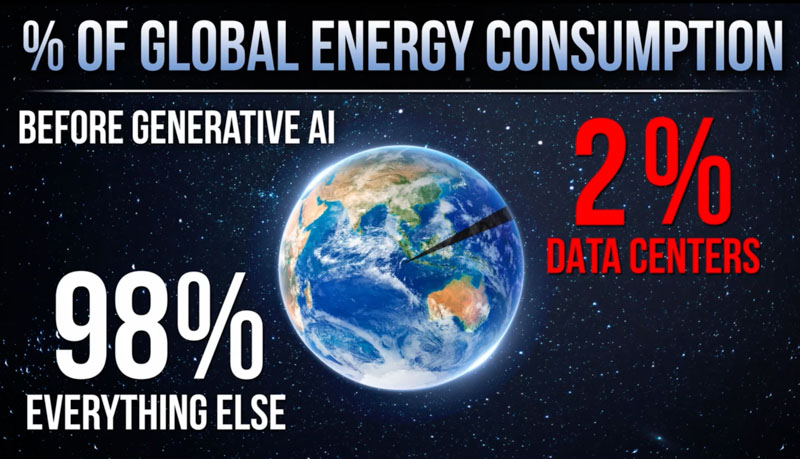
Generative AI could drive that up tenfold. To 20%.
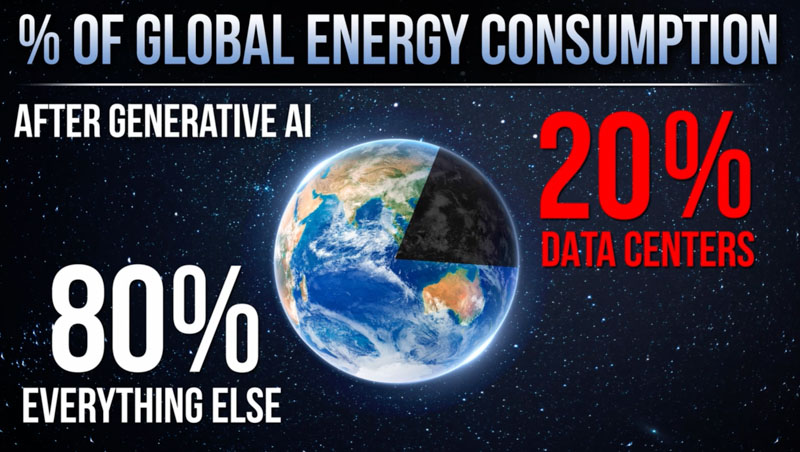
This AI Guardian can help slash those energy demands by 43%.
After IBM became a client — it planned to triple its data center locations.
JOHN: So that’s 7.2 million possible installations of this technology.
CHARLES: It doesn’t need a large percentage of those to become clients to generate an incredible amount of revenue.
Now think about cloud computing.
Artificial intelligence could send this soaring to $2.4 trillion by the end of the decade.

JOHN: And all the big cloud companies are working with this AI Guardian.
CHARLES: Every one of them. We can keep going.
Cybersecurity.
On pace to become a half a trillion dollar a year industry.
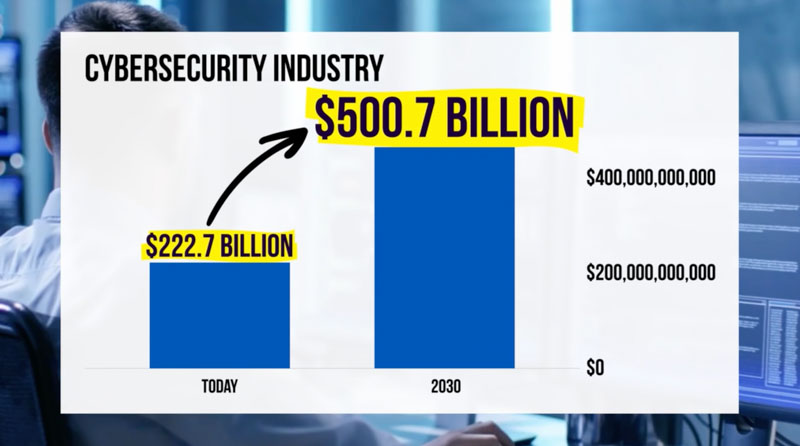
The cybersecurity leaders have delivered big for investors — with gains ranging from 500% to nearly 4,000% over the last decade or so. They’re all turning to this AI Guardian.

The federal government has determined we must quickly integrate a “zero trust” security architecture into the cloud networks.
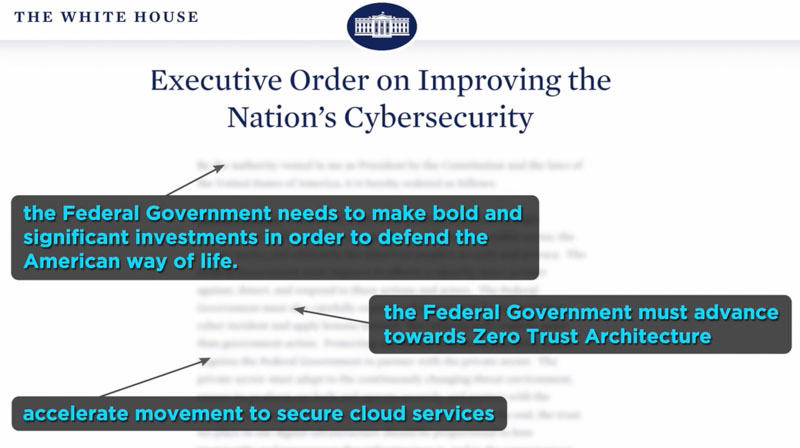
It’s the highest level of protection.
This AI Guardian has been classified as zero trust security architecture.
The Pentagon is already a client.
Keep going — biotech.
Worth about $3.9 trillion by 2030.
This AI Guardian is already helping a lab work with CRISPR, gene editing technology.
Health care — $11.3 trillion.
The AI Guardian is working with a network of 6 hospitals and 75 outpatient facilities.
Overall, the financial services industry is worth $12.5 trillion a year.
This AI Guardian is already working with investment banks.
It’s helping protect two international stock exchanges. One in Australia and another in Germany.
Netflix is using this AI Guardian.
Even Major League Baseball has begun to use it.
JOHN: It’s already everywhere yet still has so much room to run.
Your research leads you to believe this firm’s valuation could jump 2,500% over the next five years and 5,000% over the next decade.
Then it could go parabolic. Like the original Microsoft.
Is this company in a good position to weather any kind of economic headwinds or a recession?
CHARLES: Absolutely.
It took Amazon six years in the red before finally landing one in the black.
It took 18 years for Tesla to turn a profit.
Three years after landing its first client — this business was turning a profit.

And its profit margins have overtaken the major players in artificial intelligence.
Household names like Amazon, Oracle, Nvidia, Google and Cisco.
JOHN: It really is the next Microsoft — and it's quickly catching up to the profit margins of the original. Arista Networks Tab
CHARLES: John, no investment is risk-free.
Nobody should ever invest more than they can stand to lose in anything. I’m talking about this opportunity or an entirely different investment with some massive blue-chip stock.
But I believe Americans should invest in this business right now, because this is an asset that could reward them with generational wealth.
And they will want to keep on buying at strategic moments in the future.
JOHN: You have a plan for executing this.
CHARLES: Sure do.
By its very nature — this is a special situation.
So I’ve prepared a special situation report on this firm and its world-changing AI Guardian breakthrough.
It’s called The Next Microsoft: Earn Generational Wealth From the AI Guardian.
JOHN: We have it on the screen.
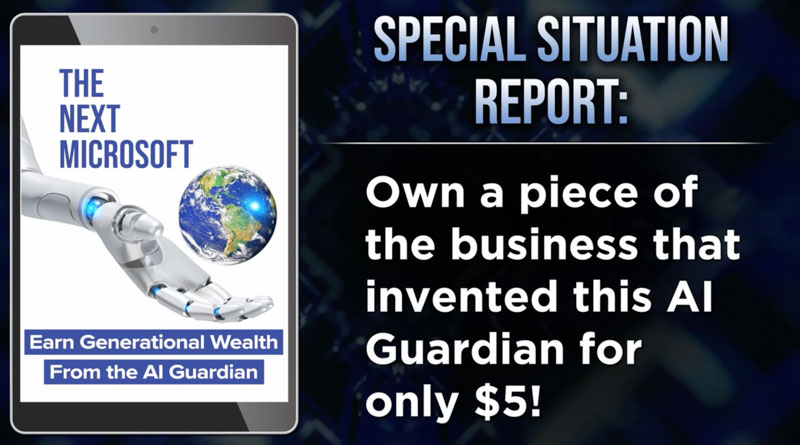
The idea of owning a piece of the business that invented this AI Guardian for only $5 is very exciting.
CHARLES: $5 is the minimum buy in.
Americans can — and they should go much bigger if they want.
JOHN: Then they can sit back and watch the firm’s valuation potentially shoot up 2,500%, 5,000% or more.
That would definitely be a rare and extraordinary event. The kind we’re all hoping for.
CHARLES: That’s why the report is comprehensive. It examines everything I just shared with you in depth.
Down to the simple instructions for buying into the business.
But I wanted to take this a step further.
AI is often referred to as the electricity of the 21st century. That’s referring to how much of a transformative effect it will have on our lives and our world.
There is going to be serious money to be made in many different areas.
So I’ve also prepared an interactive video presentation.
JOHN: You’ve named this The $22 Trillion Race to Control the New Electricity.
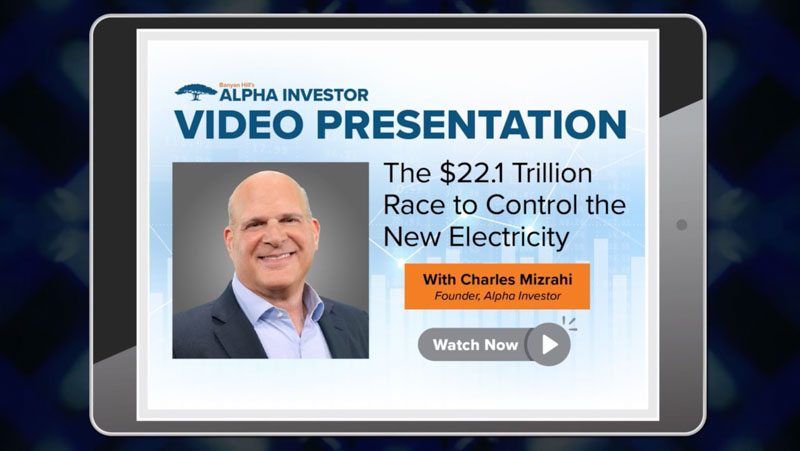
CHARLES: It’s point and click. It dives even deeper into the AI Guardian and the firm behind it. There’s a video tour of its facilities.
But I really explore the artificial intelligence industry as a whole.
I’m going to follow the entire $22 trillion money trail. You can see the trends and charts.
I want to help Americans develop a complete plan for their wealth.
JOHN: This is a once-in-a-generation investment opportunity.
In a few moments, you can have a copy of Charles’ special situation report: The Next Microsoft.
And access to his interactive video briefing:The $22 Trillion Race to Control the New Electricity
It’s all a part of something you’ve been building toward for years.
CHARLES: John, over my four decades on Wall Street — I know this with firsthand knowledge.
The rich and powerful have elite teams of experts watching over their wealth 24/7.
Opening those doors to the biggest investment opportunities. Introducing them to all the right people.
Folks on Main Street don’t stand a chance going up against those guys.
JOHN: You know how the system works.
So you set out to change it from the inside.
CHARLES: I wasn’t exactly sure how to do that for a while.
I wrote some books to share what I had learned.
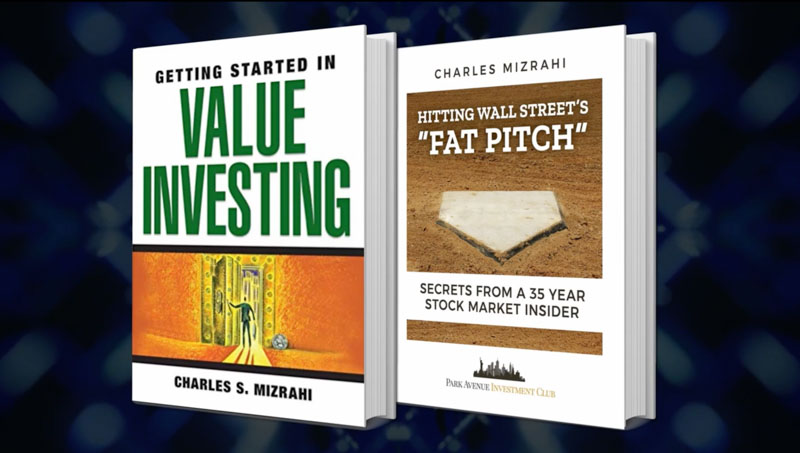
But when the Great Recession devastated the financial security of Main Street Americans, I really saw an opportunity to help.
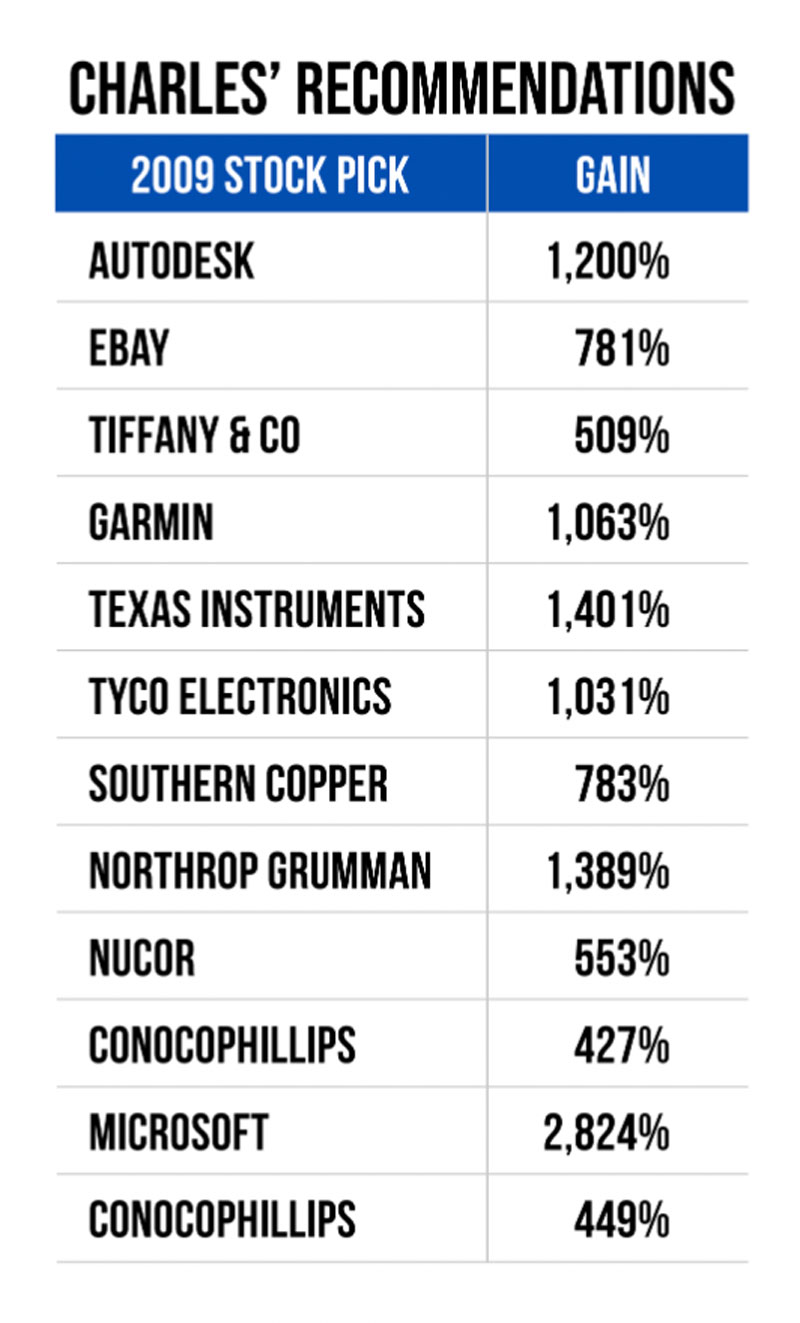
I released a short list of investments everyday folks should make to rebuild their net worths.
JOHN: We’re running the highlights from that list on the screen that shows how far they’ve risen since 2009. It’s amazing.
CHARLES: I wanted to empower Americans to take control of their investing.
They would manage their own money. They would make their own investments.
And I kept an open line of communication, so everybody’s voice was heard.
Hearing from those whose lives I’ve changed convinced me…

That helping everyday Americans should become the focus of my life’s work.
JOHN: You never looked back.
CHARLES: Now I’m proud to be leading the most important initiative of my entire career.
It’s called Alpha Investor.
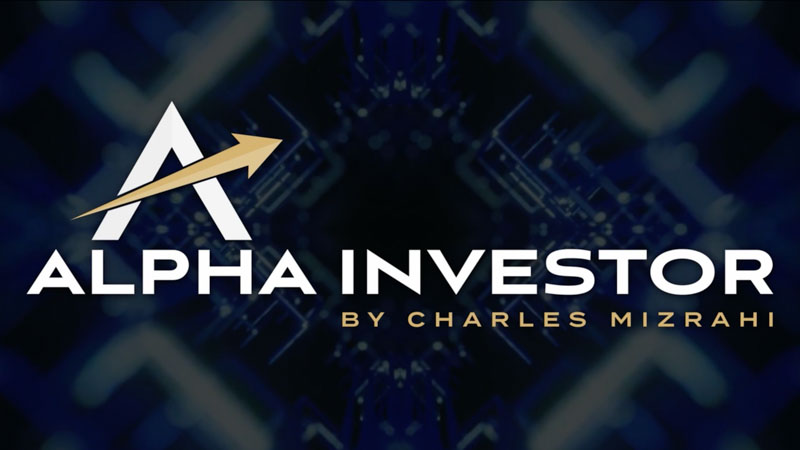
I’m setting out to help a lot of Americans radically grow their net worths.
JOHN: And you’re inviting the folks watching to join your mission.
CHARLES: I am.
JOHN: I’m definitely going to be one of them. Talk about what I can expect.
CHARLES: Every month, my team and I will combine all of our individual areas of expertise — our contacts — everything.
And I will identify the one Alpha Investment you should make.
That’s it. Nice and simple.
JOHN: How do you determine whether a business qualifies as an Alpha Investment?
CHARLES: Our strategy is straightforward and easy to understand.
First, we identify an Alpha Industry. So an industry that will experience explosive growth.
Today, we discussed artificial intelligence. That could be worth $22.1 trillion a year.
JOHN: That’s an Alpha Industry.
CHARLES: A massive one.
Next, we pinpoint an Alpha Catalyst inside that industry. The continued rise of generative AI is that catalyst.
Our third step is to pinpoint the Alpha Opportunity.
Helping all these tech companies supercharge their own AI applications and prevent them from going rogue requires a solution like this AI Guardian.
Who’s going to deliver that solution?
That’s the final step. We identify the Alpha Leader in that industry.
We want that company that has a rock-star team of founders running the show.
Historically, founder-led companies outperform all others by a factor of 4-to-1.
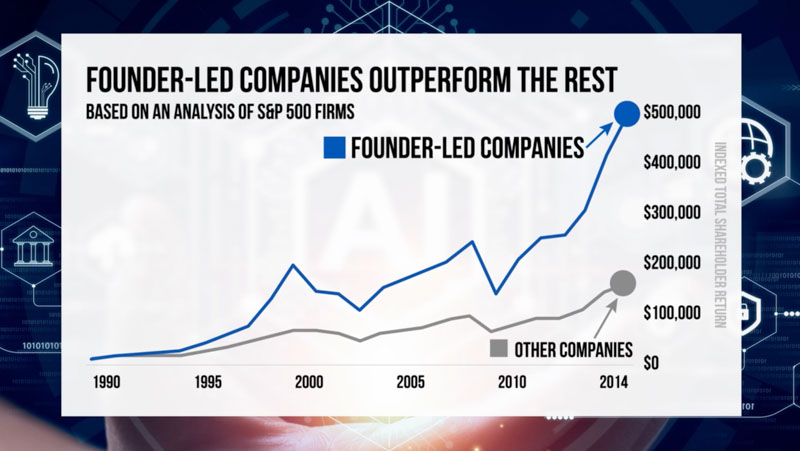
The firm I believe is the next Microsoft has founders who are serially successful billionaire entrepreneurs.
They brought in a fast-rising executive from Cisco to be their CEO.
JOHN: You really couldn’t ask for a better team.
CHARLES: No you can’t.
When you find a business that meets all of these criteria — you’re looking at an Alpha Investment.
JOHN: This system works.
It’s how you uncovered some of your best opportunities like Arista Networks, KKR, HCA Healthcare, Marvell Technology and Watsco.
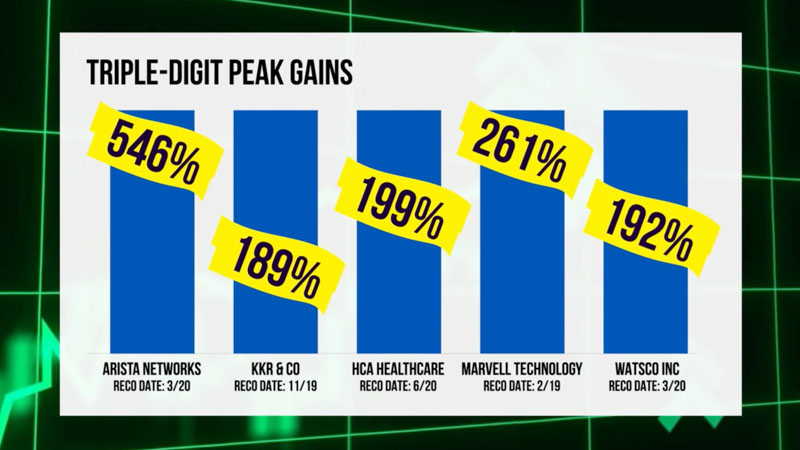
Each of these open positions has already reached triple-digit peak gains since 2019.
CHARLES: We will not win every time. Nobody does.
But this simple strategy is how I discovered the next Microsoft.
JOHN: Thanks to its AI Guardian technology, this firm could be worth 2,500% more over the next five years and 5,000% over the next decade.
CHARLES: It checks off all the right boxes to be a millionaire maker.
JOHN: But what about month-to-month moving forward?
What type of upside are you looking for with each investment?
CHARLES: We will not chase penny stocks or anything super risky.
We will target businesses we believe could deliver a 3X to 5X return over a five year period.
So every month I will compile my team’s findings, our research, risk/reward analysis and everything you need into an Alpha Business Report.
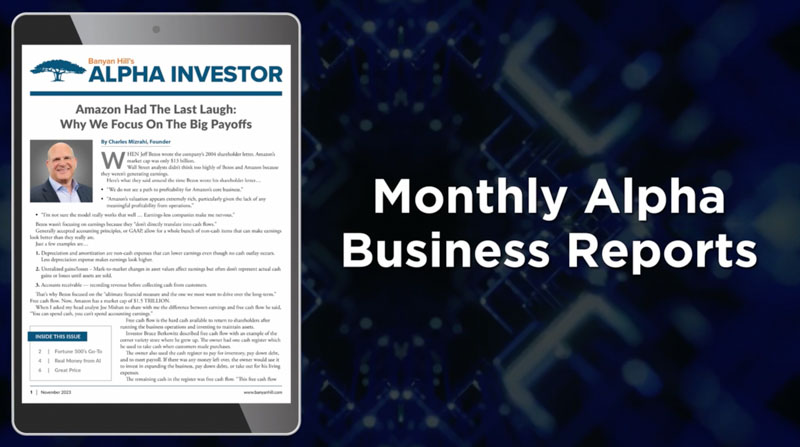
You’ll receive a copy in your email inbox. I will send you a text message alert to let you know it’s ready if you’d like.
My team has built a smartphone app as well.
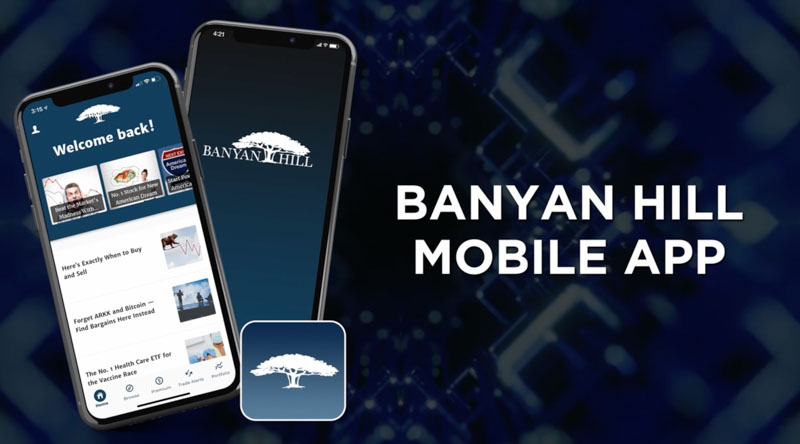
JOHN: So I get the Alpha Business Report — however, I get it — email, website, smartphone app…
I open it up and what am I seeing?
CHARLES: Everything is simple and streamlined. You will receive a full SWOT analysis on the newest business we’re targeting.
I’ll explain every strength, weakness, opportunity and threat I’ve identified.
And simple step-by-step instructions for buying into the business. We will cover everything.
Then every week I will schedule a meeting in our virtual boardroom. It’s a great way for everybody to get together.
The cameras will turn on and I’ll walk you through our latest investment target.
We’ll review the performance of every business in our model portfolio. And we’ll examine the major economic events and what they could mean for folks’ wealth.
JOHN: Is this a one-way line of communication? Or will members like me be able to participate?
CHARLES: Two-way line of communication.
You and your fellow members can ask questions.
I’m going to answer as many as I can. My team will as well.
I want to get to know you. And I want you to get to know my team and me.
I’m a big believer that the power of a community working together is greater than the sum of its individual members.
JOHN: Meaning, each of us has unique strengths and areas of expertise.
CHARLES: I plan to tap into them all.
And I want to make sure everybody hits the ground running.
So I have prepared two additional bonus reports.
The first is called: The No. 1 Play for the $6.2 Trillion Demographic Boom.
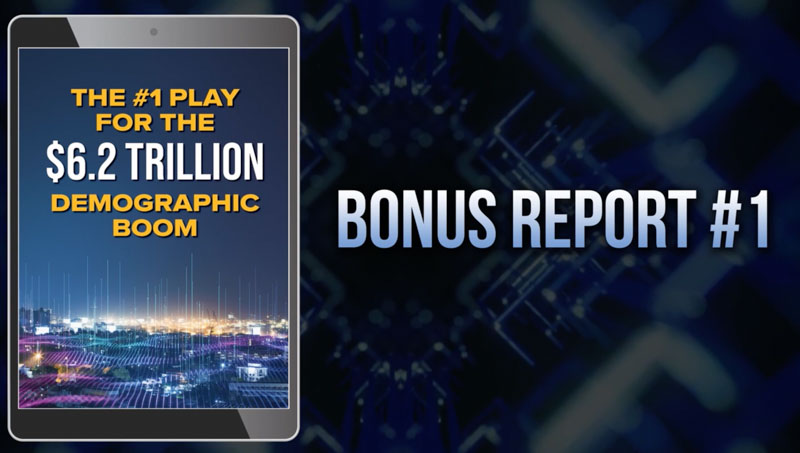
This chart speaks for itself. American seniors already represent a larger percentage of our population than any point in history.
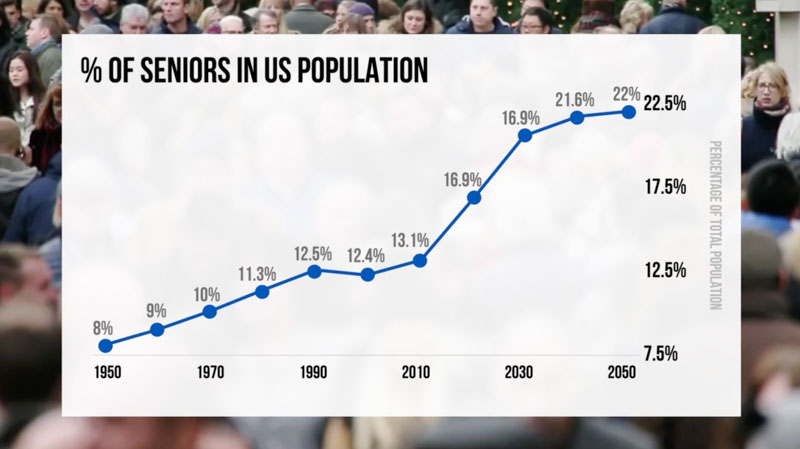
But this trend is only going in one direction.
By 2028, the U.S. health care industry is expected to reach $6.2 trillion a year.
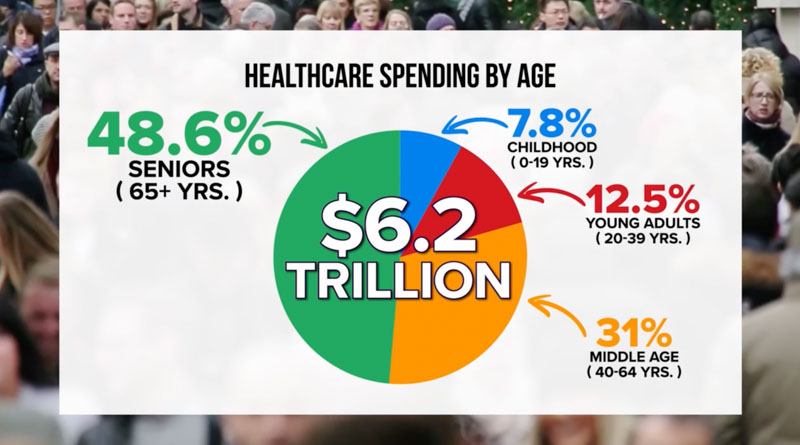
For every dollar we spend on health care, nearly $0.50 will be spent during our golden years.
My team and I have selected a high-tech firm in the health care sector that could be the biggest winner of this powerful demographic shift.
This company’s dividend has risen 571% over the last decade.
JOHN: That’s a serious passive income machine.
CHARLES: Everything about this business, John… Its revenue, profit margins, all of the important indicators — have tracked right in line with this demographic shift.
So you can predict its future. It should continue to grow its dividend payout.
And the capital gains could provide for a 3X windfall in the coming years.
JOHN: Let’s hear about your second bonus report.
CHARLES: It’s called: Ride the $68 Trillion Wave.

Over the coming years, baby boomers will transfer $68 trillion of wealth to their millennial children.
This will make the millennial generation the wealthiest in American history. During the 2030s, it’s estimated that they will amass five times more wealth than they have now.
This incredible money trail led my team and me to the financial services firm that could jump 3X in value in five years from being the go-to solution for these younger investors.
JOHN: Charles, what if I’m new to investing?
Like this member you helped?
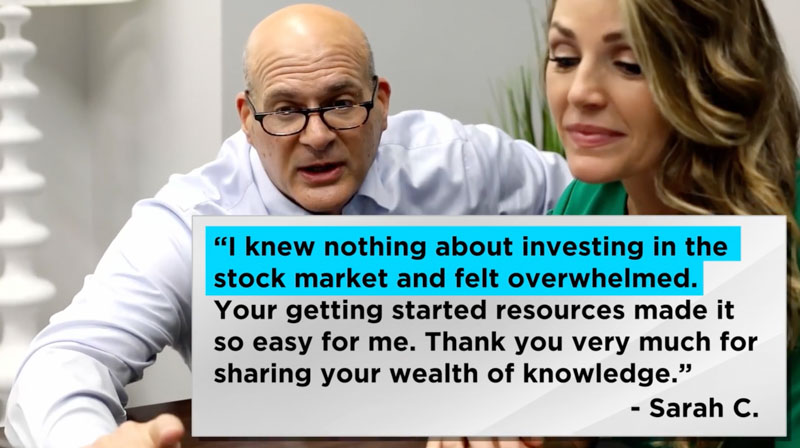
Maybe I’ve just relied on my 401(k) or pension.
Is this right for me?
CHARLES: If you’re new to investing, it can feel overwhelming. You don’t know how to get started.
I’ve got your back. You’ll be ready on day one.
I have a three-part, interactive video series and a collection of educational reports that will get you up to speed quick.
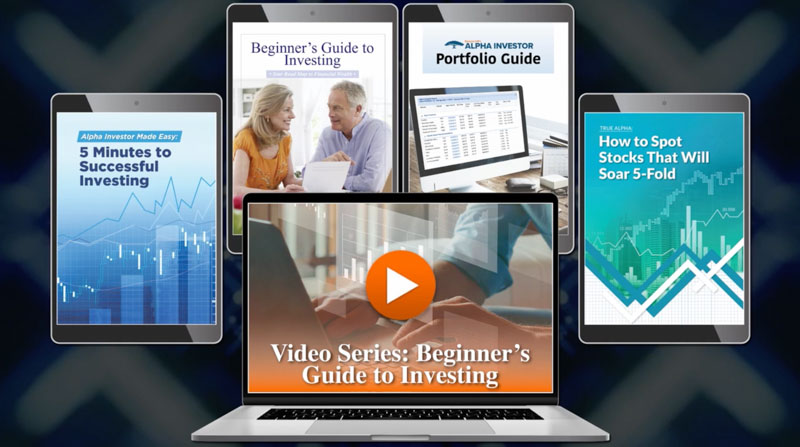
The members-only website has a 24/7 portfolio tracker so you can always review how every business is performing.
And I’ve built an investment research library with resources you can turn to whenever you need.
JOHN: Charles, this has become a grassroots movement.
People are sharing inspirational stories of how you are changing their lives.

They’re adding six figures to their net worths in a very short amount of time.
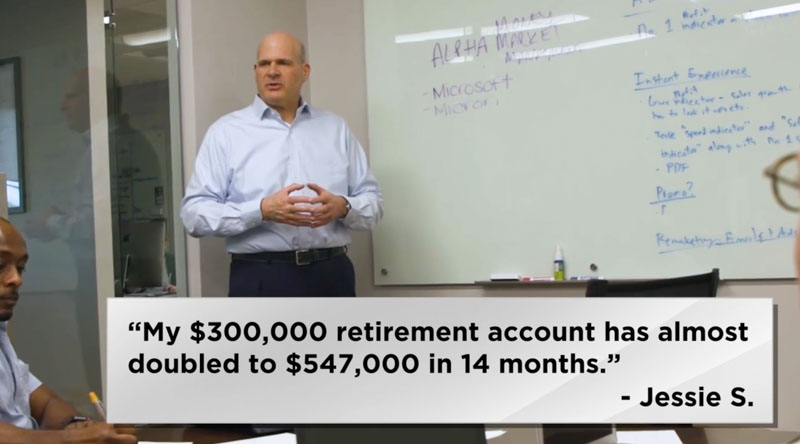
They’re doubling and tripling their wealth. Even beating your aggressive returns. True financial transformation.
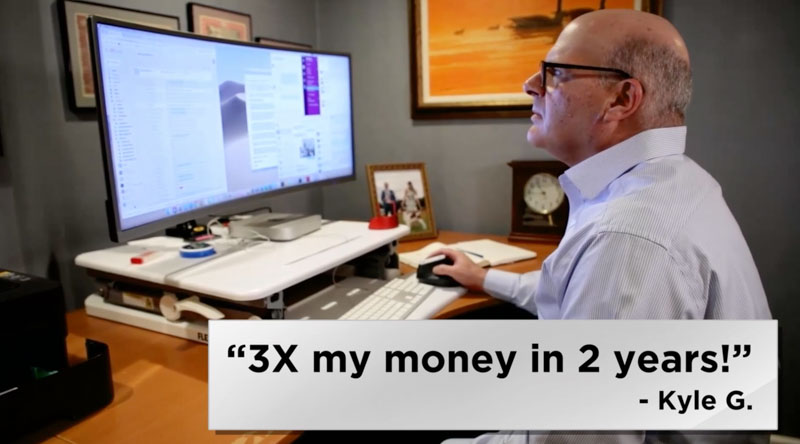
You can feel it. Members really believe they’re the underdogs and they’re winning.
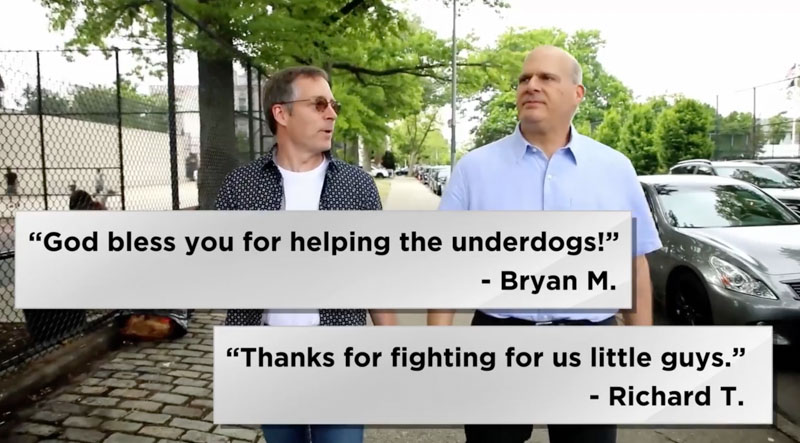
The Davids beating the Goliaths of Wall Street.
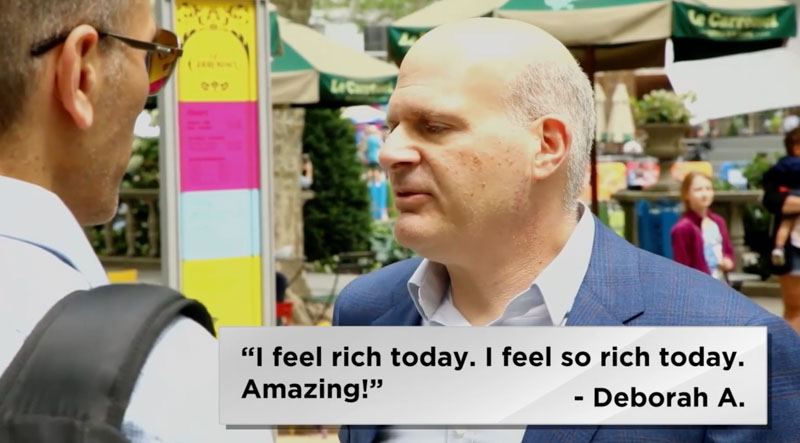
CHARLES: Personally, I love receiving letters like this one. This gentleman brought his family to this country with very little. He’s now living the American dream.
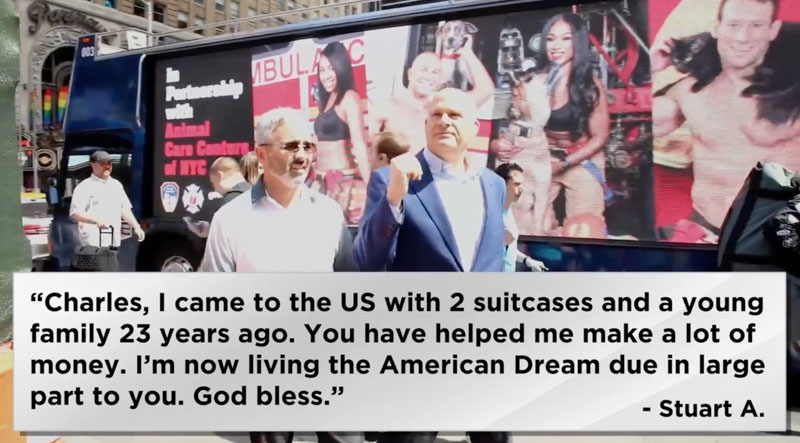
I want to help more people do the same.
So I’m also leveraging all of my contacts to bring members the real story on major events and stories that will affect their money, our economy and country.
I’ve introduced our community to Steven Koonin, the former Under Secretary for Science at the Department of Energy.
David Cote, the former CEO of Honeywell and George Zimmer the founder of Men’s Wearhouse.
Diana Furchtgott-Roth who served as the chief economist of the United States Department of Labor. And so many others.
JOHN: Obviously, you aren’t doing this for free, Charles.
And it goes without saying that you’ve made a pretty penny with your investment funds and consultant fees over the years.
CHARLES: None of that matters to me with this venture.
JOHN: Clearly not.
Here’s the subscription rate your team estimated this is worth.
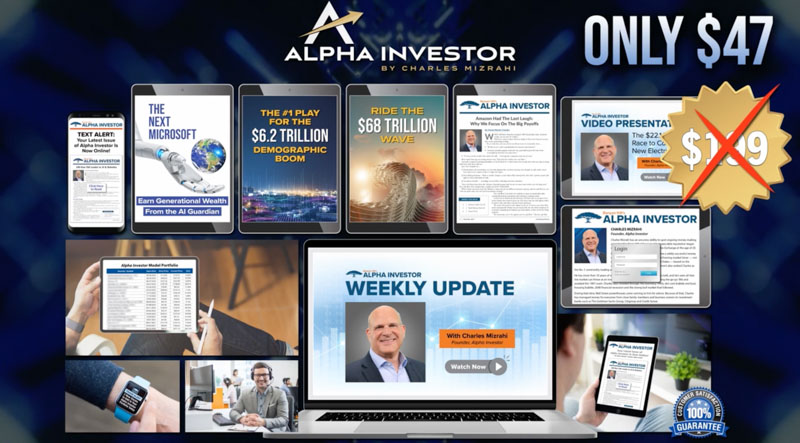
Here’s what you’re allowing members to join for.
That’s a serious discount.
Anyone can afford to become a member.
Even so, when you join, you’ll have 12 months to test-drive everything.
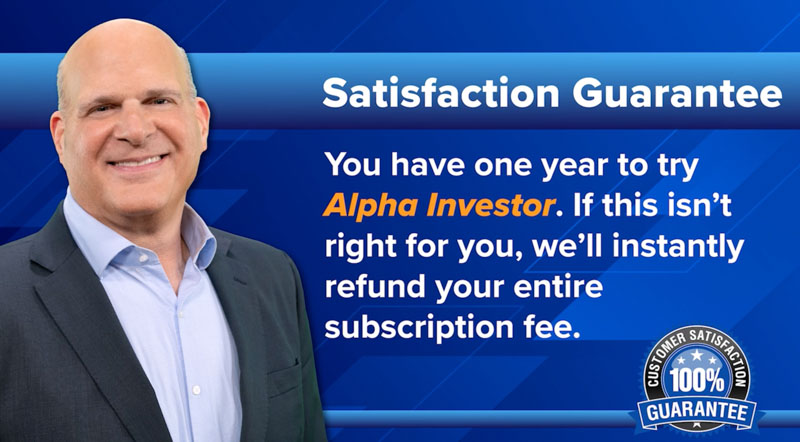
If this isn’t right for someone you’ll instantly refund their entire subscription fee.
CHARLES: Gladly.
Here’s one last thing, John.
Every year, members will receive an invitation to attend our Total Wealth Symposium. You can bring your spouse, a friend or whoever you choose.
It’s a great opportunity for everybody to get together and meet in person. We’ll have investment presentations and training sessions, but also a lot of fun too.
We always hold these events somewhere nice and sunny.
Florida, the Caribbean, California and so forth.
I look forward to seeing everybody there.
JOHN: Count me in for the next conference.
CHARLES: I’ll save you a spot.
JOHN: We’ve placed a button below this video where you can join us here at Alpha Investor.

We’d love to have you.
Charles will immediately rush you a copy of The Next Microsoft.

It’s primed to jump 2,500% in value over the next five years.
And 5,000% over the next decade.
You’ll also receive the video briefing: The $22 Trillion Race to Control the New Electricity.

And copies of The No. 1 Play for the $6.2 Trillion Demographic Boom. Plus, Ride The $68 Trillion Wave.
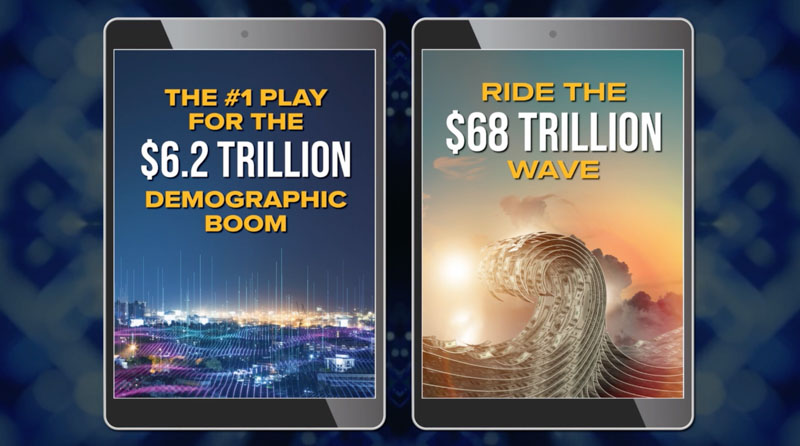
Both of these businesses could deliver 3X windfalls in the years ahead.
Charles, any final words before we conclude our interview?
CHARLES: Yes, I’ll make this brief.
There are few investments that are truly millionaire makers.
Microsoft was one of them. It invented the universal operating system for PCs.
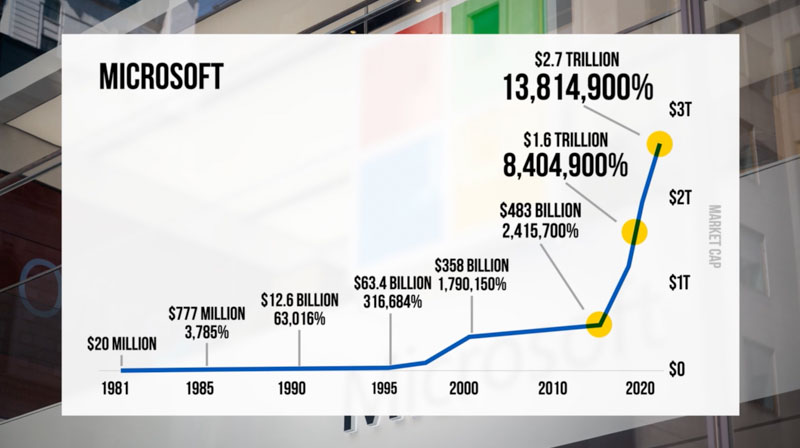
But you’ll find most of the world’s biggest companies invented the dominant operating system for their industry.
Amazon invented the dominant operating system for e-commerce.

It helped propel it from a $5 million startup to being worth over $1.5 trillion today.
Google wasn’t the first search engine — but it invented the dominant operating system.
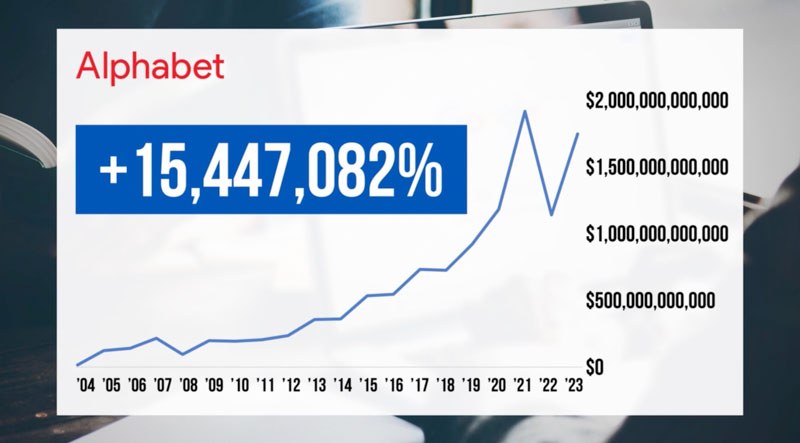
Apple’s personal computers made it a large company.
But in 2007, it debuted the iPhone. It invented the smartphone operating system for businesses to build powerful mobile applications.

Tesla invented the operating system for electric vehicles.
And now all the major automotive companies will rely on Tesla’s decentralized charging network for their own EVs.
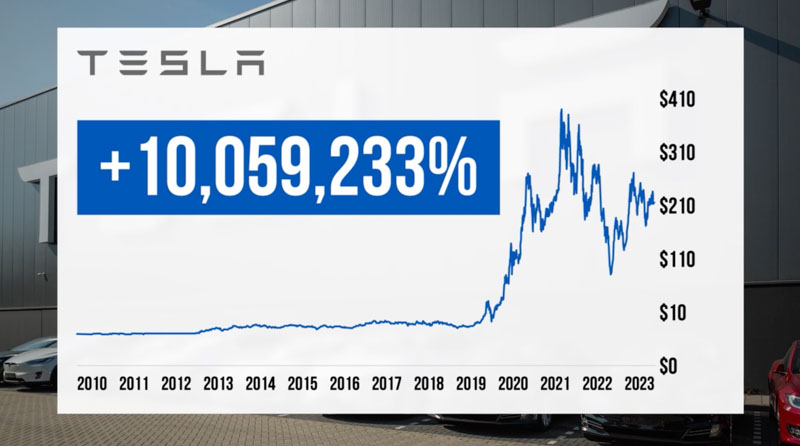
JOHN: If you invested in these businesses early you made a fortune.
CHARLES: Generational wealth. Case closed.
If you didn’t — here’s your chance to get into what could very well become the next opportunity.
Right now, the firm that’s developed this AI Guardian is unknown to almost every person on this planet.
Yet it was able to build the universal operating system for all artificial intelligence applications.
It is becoming mission critical for every company that wants their share of that $22.1 trillion a year in wealth that’s coming.
This is the next Microsoft. And you can get a piece of this business for $5.
JOHN: I don’t think you could have said it any better.
So let’s not waste another moment. Click the button below and join Charles Mizrahi and his Alpha Investor team.
Charles, thanks for being here.
CHARLES: Thank you for having me.
JOHN: And thank you so much for giving us your time today.
Take care.

December 2023© 2024 Banyan Hill Publishing. All Rights Reserved. To ensure that you are using our information and products appropriately, please visit our terms and privacy pages. Do not sell or share my personal information.
